STEM Explorers: Discovering the Magic of Science, Tech, Engineering & Math!
Introduction: Embarking on a STEM Adventure!

Hey there, future scientist, tech guru, engineer, and math whiz! Are you ready to embark on an exciting journey through the incredible world of STEM? By the end of this book, you'll discover the magic of science, the wonders of technology, the art of engineering, and the fun in math. Whether you're curious about how things work or dream of inventing something new, this is the perfect place to start your adventure. Let's dive in and explore the limitless possibilities of STEM!
Chapter 1: The Wonderful World of Science
What is Science?
Imagine you're a detective, always curious, always asking questions, always searching for clues. That's what scientists do! They ask questions about the world around them and use experiments, observations, and research to find the answers. Science is the magic key that helps us understand the mysteries of our universe, from the tiniest creatures on Earth to the vast expanse of the cosmos.

Types of Science:
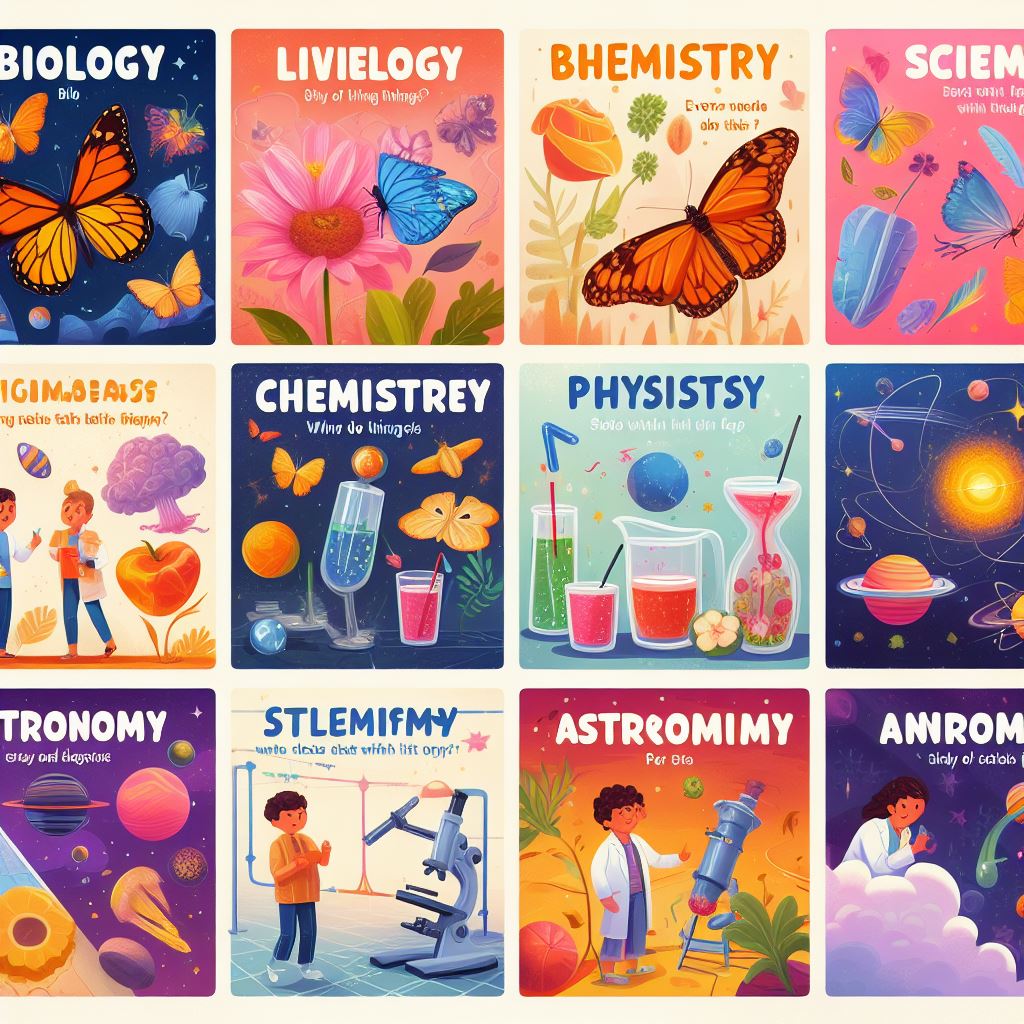
Biology: This is the study of living things. Everything from tiny ants crawling on the ground to massive whales swimming in the ocean falls under biology. Did you know that butterflies can taste things with their feet? Next time you see one, just imagine it tasting the flowers it lands on!
Chemistry: Ever wondered what makes soda fizzy or why ice melts? Chemistry is the study of matter (stuff) and the changes it goes through. By understanding chemistry, you can learn about the building blocks of everything around you.
Physics: Have you ever thrown a ball and wondered why it travels in a certain way? Or why do magnets stick to your fridge? Physics is the study of energy, motion, and forces. It helps us understand why things move and behave the way they do.
Astronomy: When you look up at the night sky and see the twinkling stars, planets, and the moon, that's astronomy in action! Astronomy is the study of everything beyond our planet. It helps us learn about galaxies, black holes, and even the possibility of alien life!
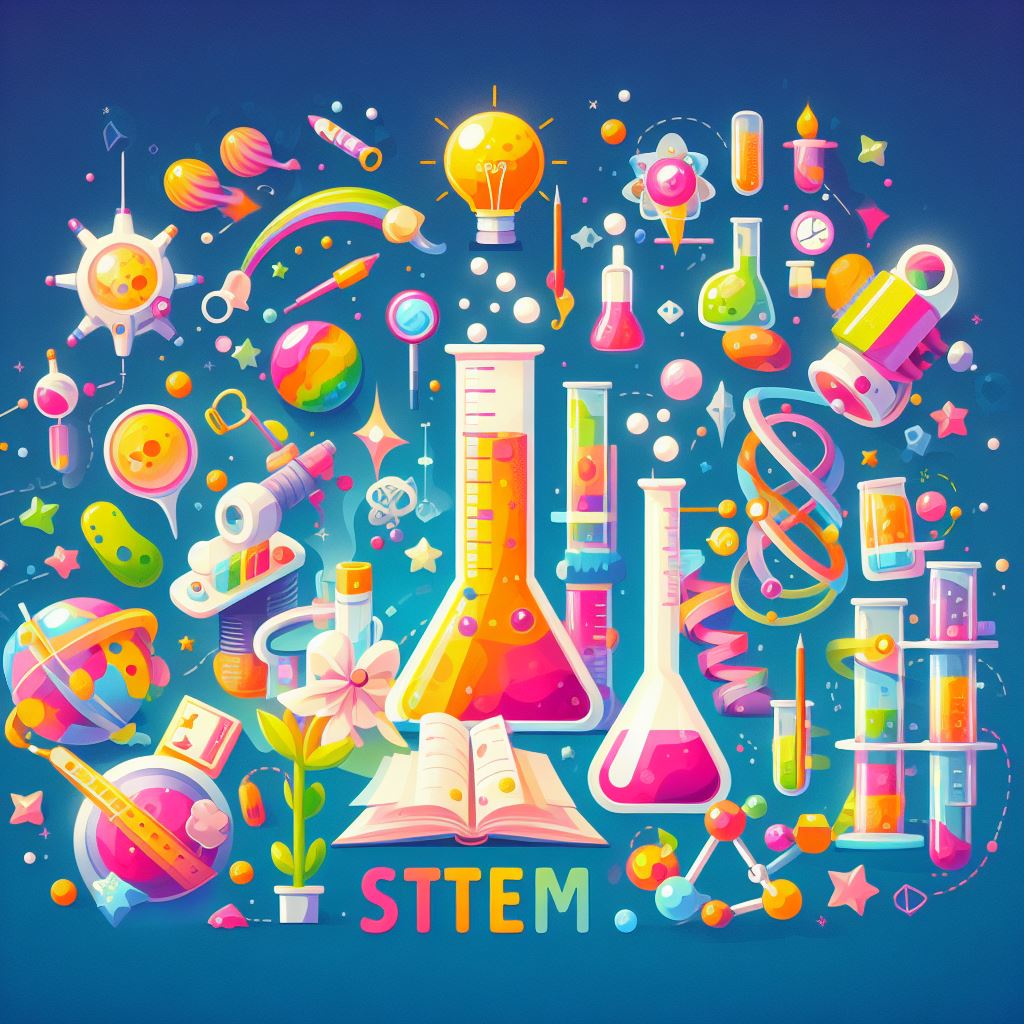
Fun Science Experiment: Dancing Raisins
You'll Need:
Clear soda (like Sprite or 7-Up)
A few raisins
A clear glass
Steps:
Pour the soda into the glass until it's about three-quarters full.
Drop a handful of raisins into the glass.
Sit back and watch! What do you observe?
What's Happening?
The carbon dioxide bubbles in the soda attach to the raisins. These bubbles make the raisins lighter, causing them to float to the top. Once the bubbles pop and the gas is released, the raisins become heavier and sink back down. It looks like the raisins are dancing in the soda!
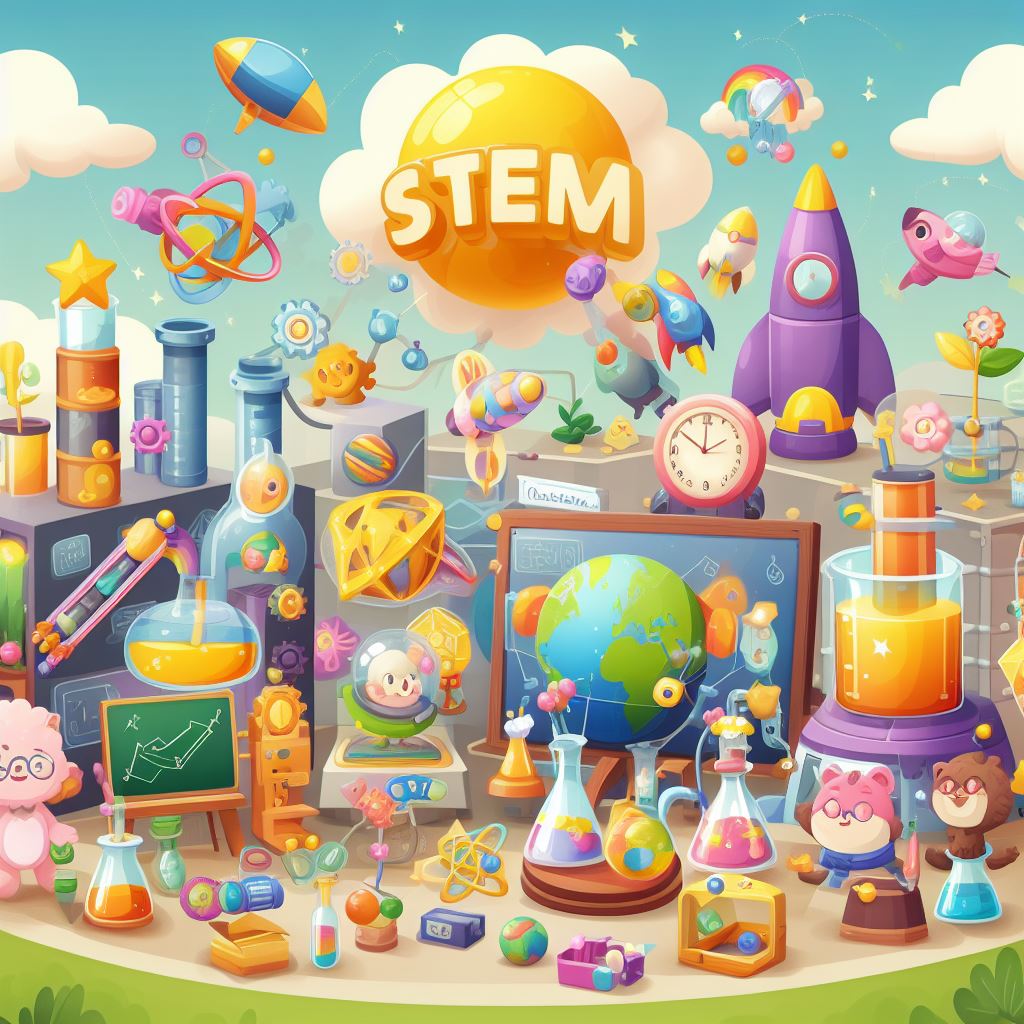
Did You Know?
The smallest bone in your body is in your ear and is called the "stapes." It's only about the size of a grain of rice!
The world's largest volcano, Mauna Loa in Hawaii, is so enormous that if you measure it from its underwater base, it's taller than Mount Everest!
Plants can "talk" to each other! Well, not with words, but they can send chemical signals to warn other plants about dangers like pests.

As you journey through the world of science, remember that it's all about curiosity and discovery. Every question you ask and every experiment you try brings you one step closer to understanding the incredible universe we live in. So, keep asking, keep exploring, and most importantly, have fun!
Chapter 2: Tech Titans: The Digital Playground
The Dawn of Technology
Long before we had smartphones, tablets, or computers, humans used simple tools made of stone, wood, and bone. As time passed, our tools evolved, and with the discovery of electricity, we entered a new era of technological wonders. Today, we live in a digital playground where technology plays a massive role in our daily lives. From the games we play to the way we learn, technology is everywhere!
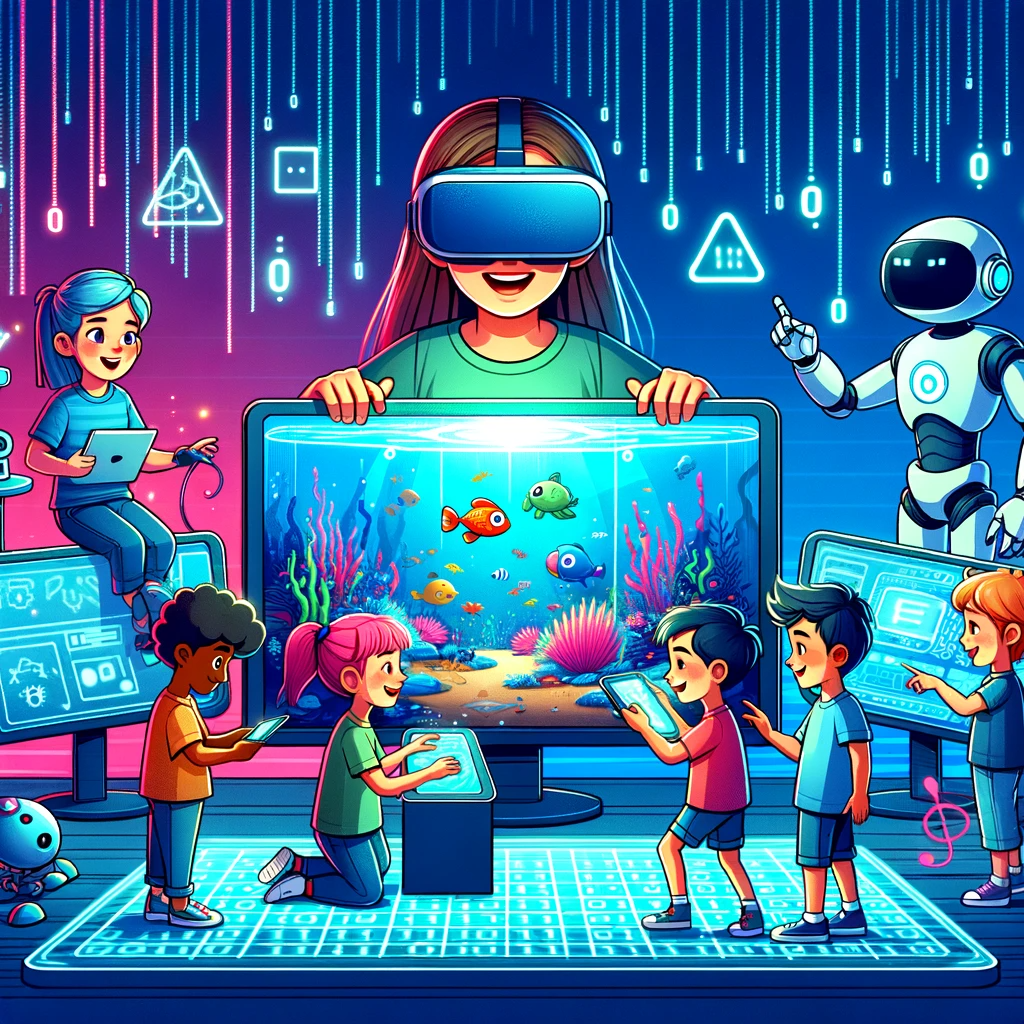
Exploring the World of Computers
Hardware: Just like our body has bones and muscles, computers have hardware. This includes the computer's brain (called the CPU), memory, and even the screen you're looking at right now!
Software: Imagine if you had a set of instructions for every action, like tying your shoes or brushing your teeth. Software is like that for computers; it tells them what to do!
Coding: Have you ever wanted to create your own game or app? Coding is the language of computers. By learning to code, you can tell a computer exactly what you want it to do!
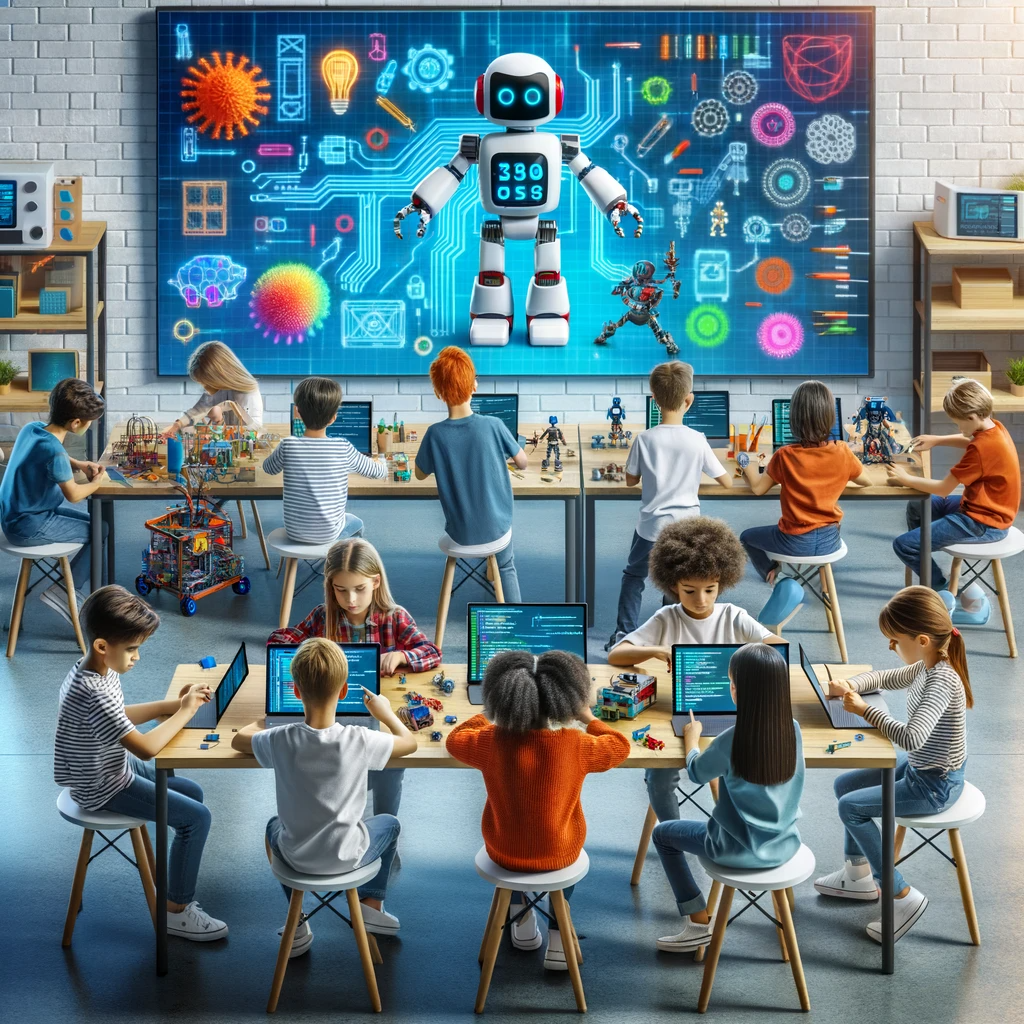
Tech in Our Lives
Virtual Reality (VR): Put on special goggles, and you can dive into a 3D world where you can explore underwater cities, fly in space, or even walk with dinosaurs!
Artificial Intelligence (AI): Machines that can think and learn like humans. Have you spoken to a digital assistant like Siri or Alexa? That's AI in action!
Robots: From cleaning our homes to exploring other planets, robots are versatile machines that can do tasks big and small.
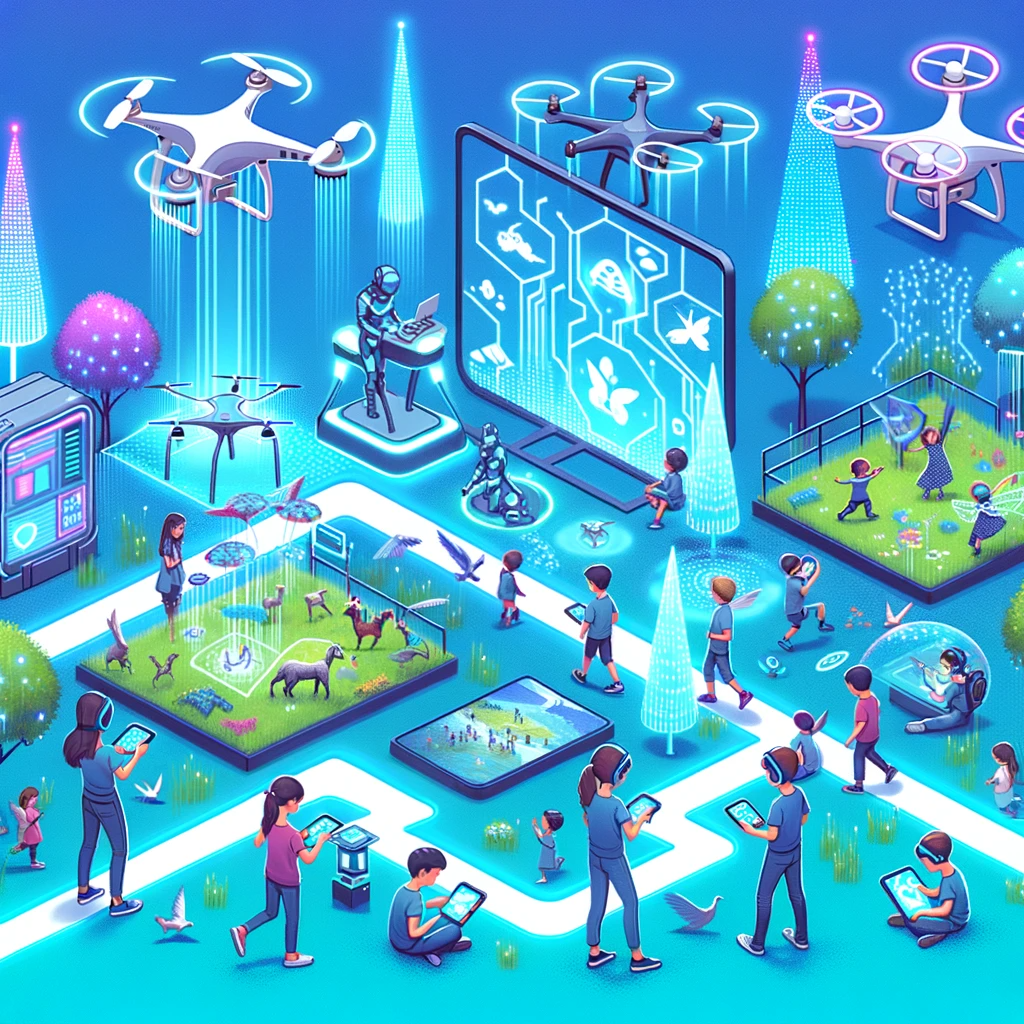
Fun Tech Activity: Binary Bracelets
Two colors of beads (e.g., black and white)
Elastic string
Steps:
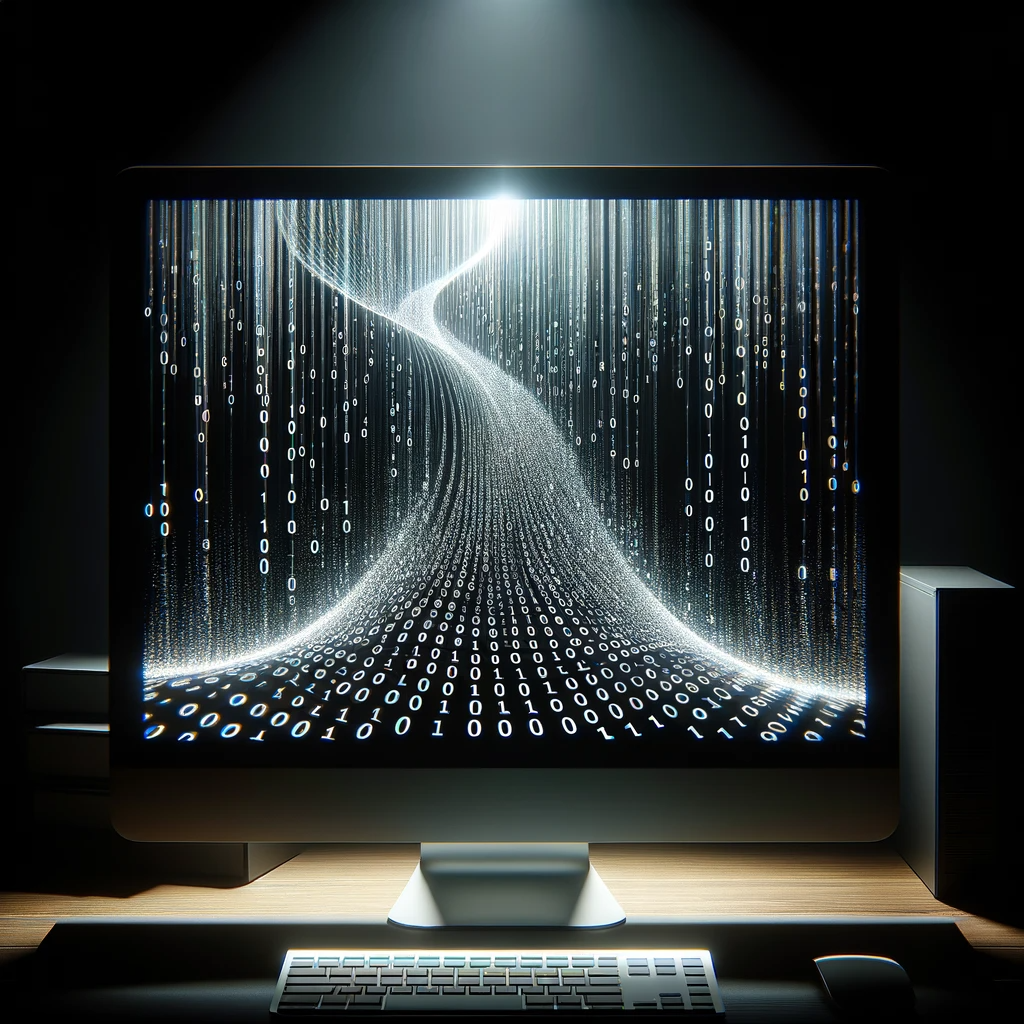
Decide on a word, like your name.
Use a binary code chart to translate each letter of your word into binary (a combination of 1s and 0s).
String the beads onto the elastic, using one color for 1s and another for 0s.
Tie the ends together, and you have a binary bracelet!
What's Happening?
Computers use a language called binary, made up of only two numbers: 0 and 1. Your
bracelet represents your name in this computer language!
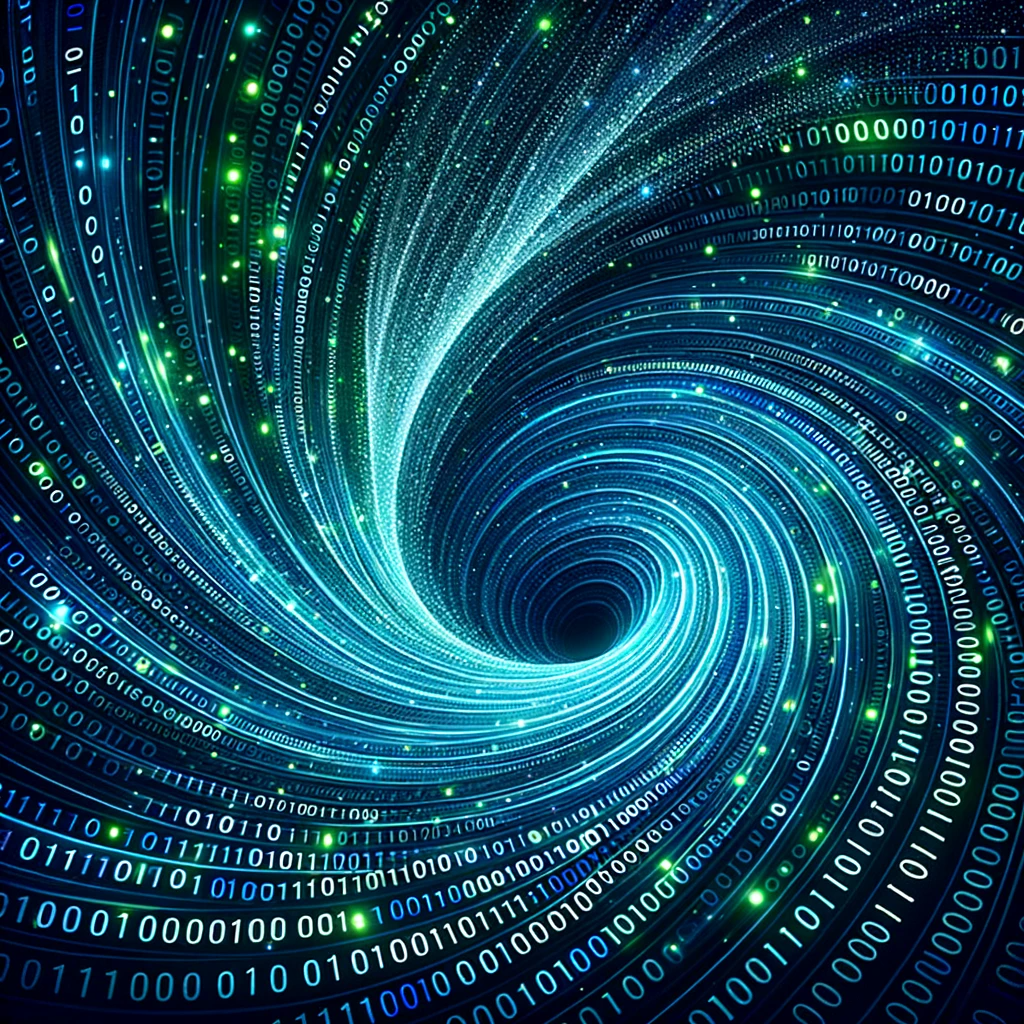
Tech Trivia!
The first computer was so big it filled an entire room!
There are more possible moves in a game of chess than there are atoms in the universe
The word "robot" comes from a Czech word meaning "forced labor."
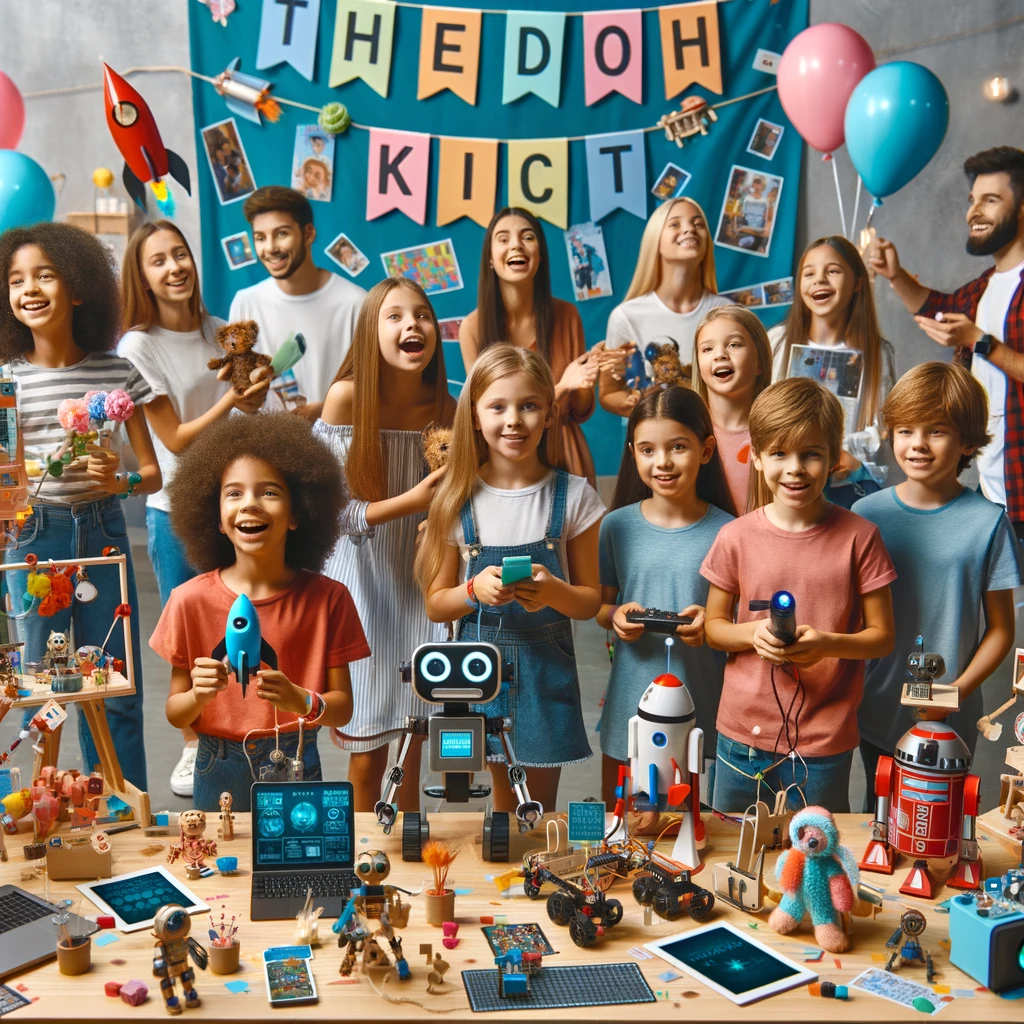
In the world of technology, the possibilities are endless. From designing video games to building robots, the digital playground is a realm of endless creativity and innovation. As you continue your tech journey, remember that every click, swipe, and code is a step towards the future. With technology at your fingertips, you have the power to shape tomorrow!
Chapter 3: Building Dreams: An Introduction to Engineering
The Magic of Engineering
Have you ever looked at a skyscraper and wondered how it stands so tall without falling? Or observed a bridge and thought about how it can support so many cars and trucks? That’s the magic of engineering! Engineers are like real-life wizards who use science, math, and creativity to design and build incredible things.
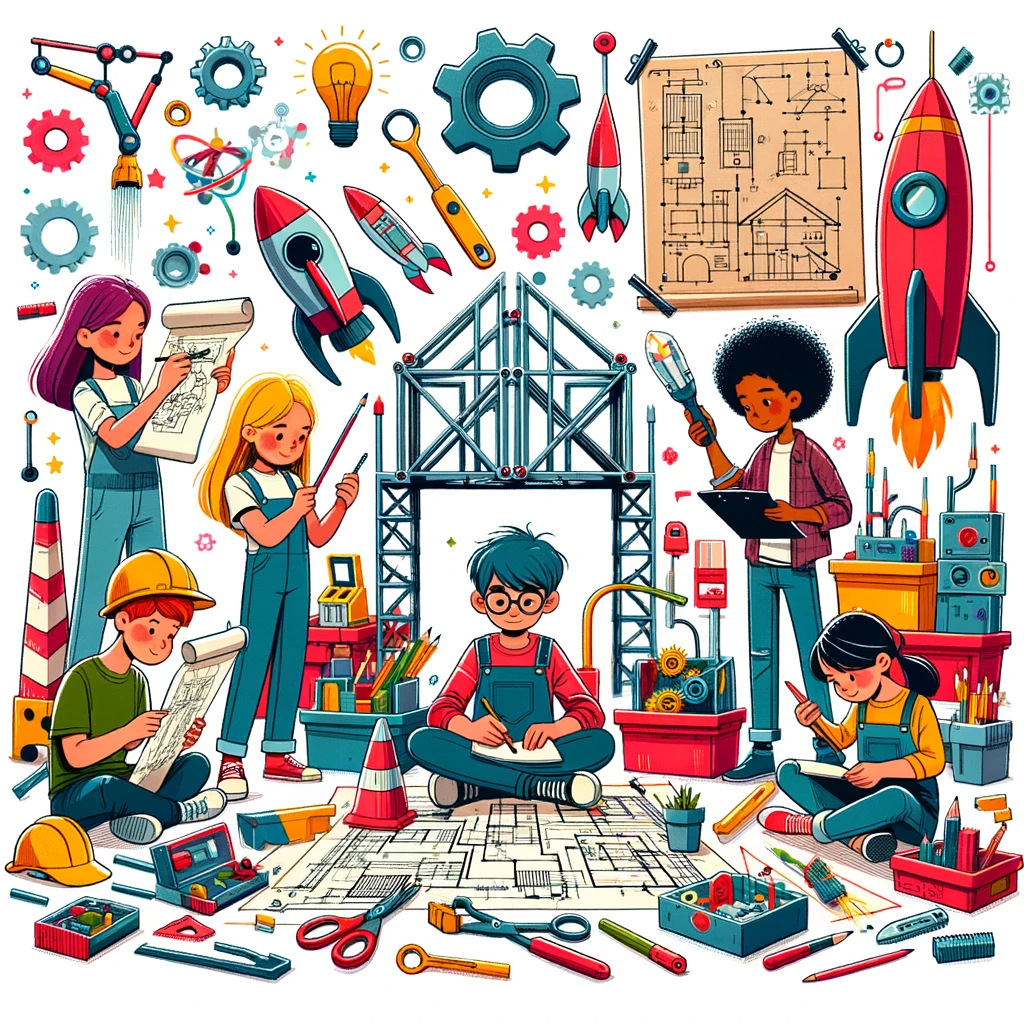
Different Hats of an Engineer
Civil Engineers: They design and create structures like bridges, roads, and buildings. Thanks to them, we have cities with towering skyscrapers and vast highways.
Mechanical Engineers: Ever been fascinated by how cars move or how your bicycle works? These engineers deal with machines and mechanical systems.
Electrical Engineers: They play with electricity and design things like circuits, robots, and even the device you're reading this on!
Aerospace Engineers: Dreaming of the stars and skies? These engineers design airplanes, rockets, and spacecraft.
Chemical Engineers: Mixing, bubbling, and reactions! They turn raw materials into useful products, like turning crude oil into gasoline.

Fun Engineering Activity: Paper Bridge Challenge
You'll Need:
Some sheets of paper
Coins or small weights
Steps:
Take a sheet of paper and place it between two books, creating a gap.
Try placing coins on the paper. How many can it hold before it collapses?
Now, fold the paper or curve it into different shapes. Can it hold more coins now?
What's Happening?
The shape and structure of the paper bridge determine its strength. Engineers use similar principles when designing real bridges!
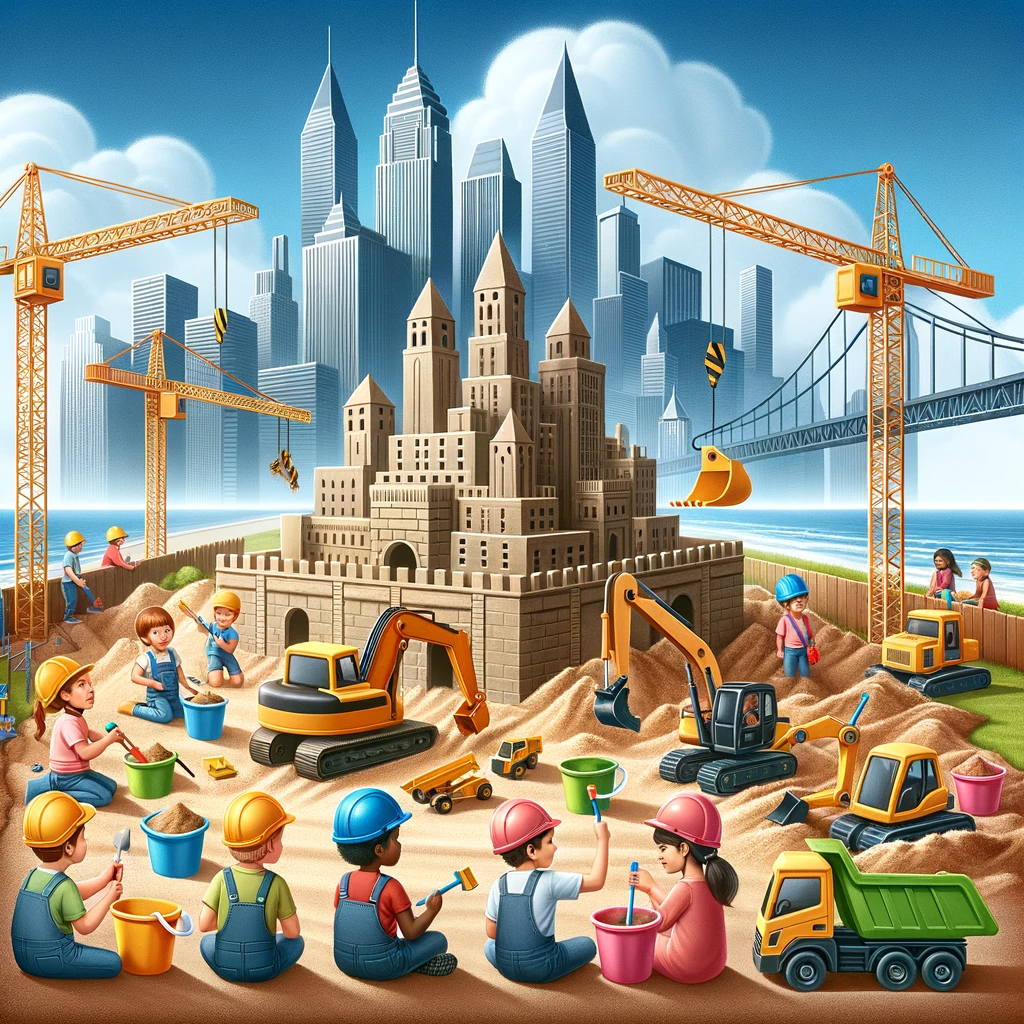
Engineering Wonders of the World
The Eiffel Tower in France: This iron tower stands tall at 324 meters and was once the tallest man-made structure in the world.
The Great Wall of China: Spanning over 13,000 miles, this wall was built to protect Chinese states and empires.
The International Space Station: Floating in space, this is a symbol of international cooperation and engineering brilliance.
Engineering Trivia!
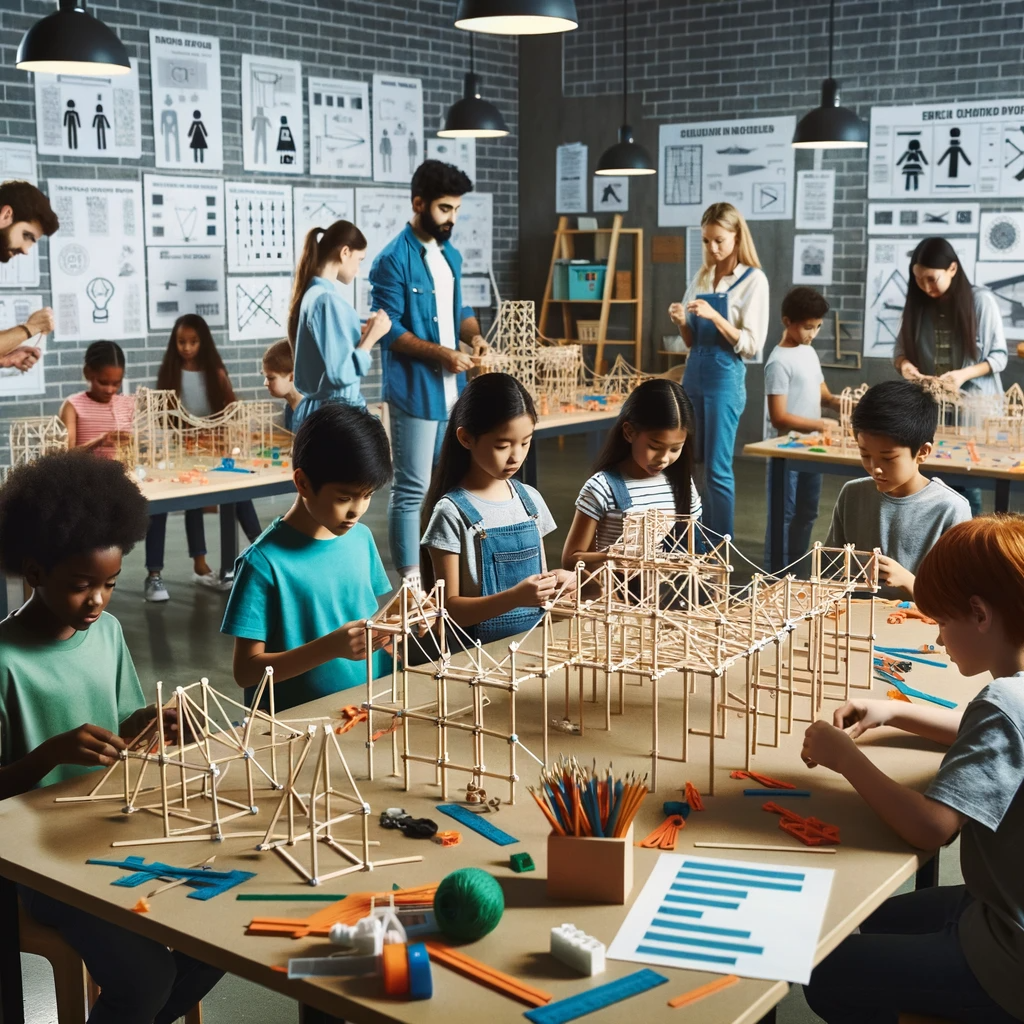
The world's longest bridge is the Danyang-Kunshan Grand Bridge in China, measuring over 102 miles.
The Burj Khalifa in Dubai is the tallest building in the world, reaching an impressive height of 828 meters.
Velcro was inspired by the way burrs stick to animal fur, showing that engineers often get ideas from nature.
Engineers are dreamers and doers. They imagine what's possible and then make it happen. As you explore the world of engineering, remember that every structure, machine, and invention started as a simple idea. With passion and determination, you too can build your dreams!
Chapter 4: Mysteries of Math: Fun with Numbers
Math Magic Everywhere
Welcome to the world of math, where numbers are not just digits—they're the secret language of the universe! Math is not about memorizing formulas; it's about solving mysteries. Every time you divide a pizza among friends or count the stars, you're a math magician!
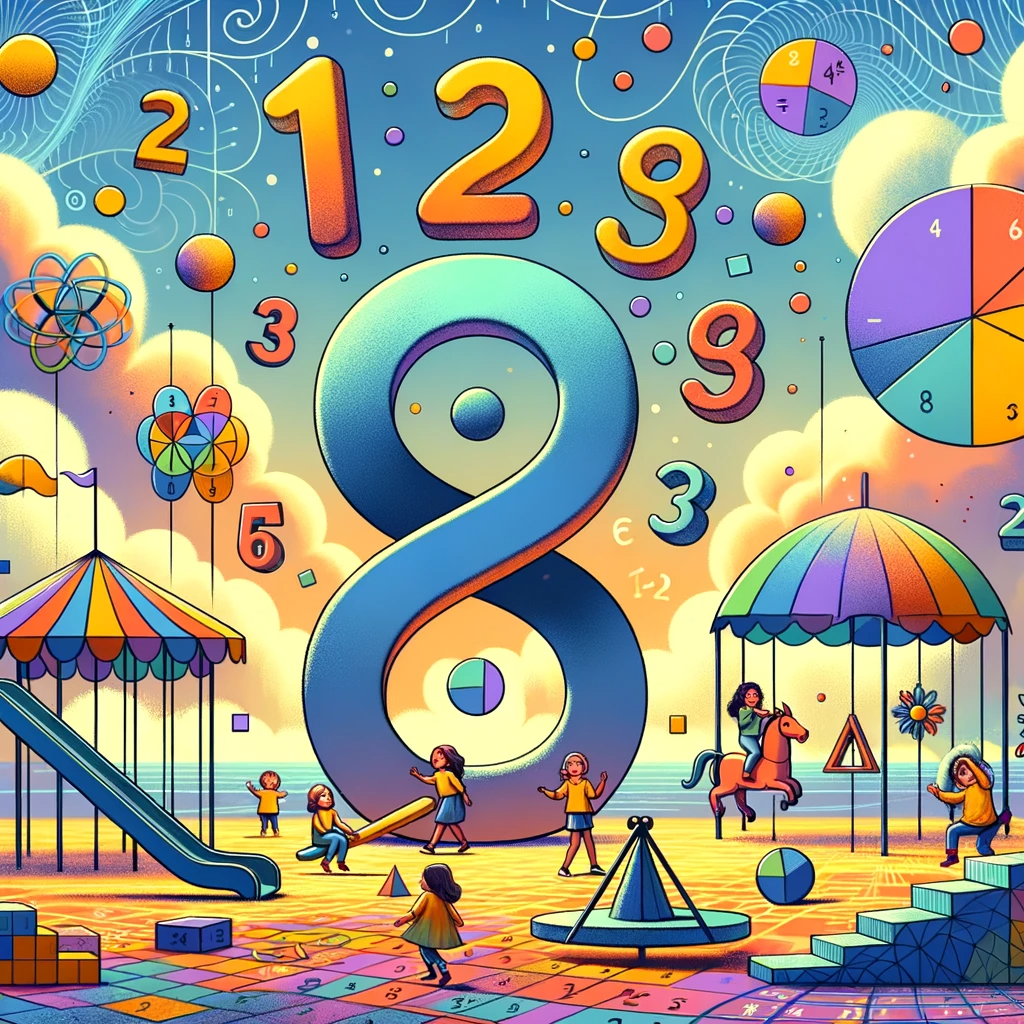
Addition and Subtraction: The Building Blocks
Imagine you're on a treasure hunt. Addition helps you gather more gems, and subtraction helps you give some to your teammates. They're the basic tools in your math toolbox.
Activity: Number Line Leapfrog
Draw a long line on the ground and write numbers from 1 to 20.
Throw a stone to a number—that's your starting point.
Now, leapfrog to a new number. How many leaps did it take? That's addition!
To go back, that's subtraction. How many leaps now?
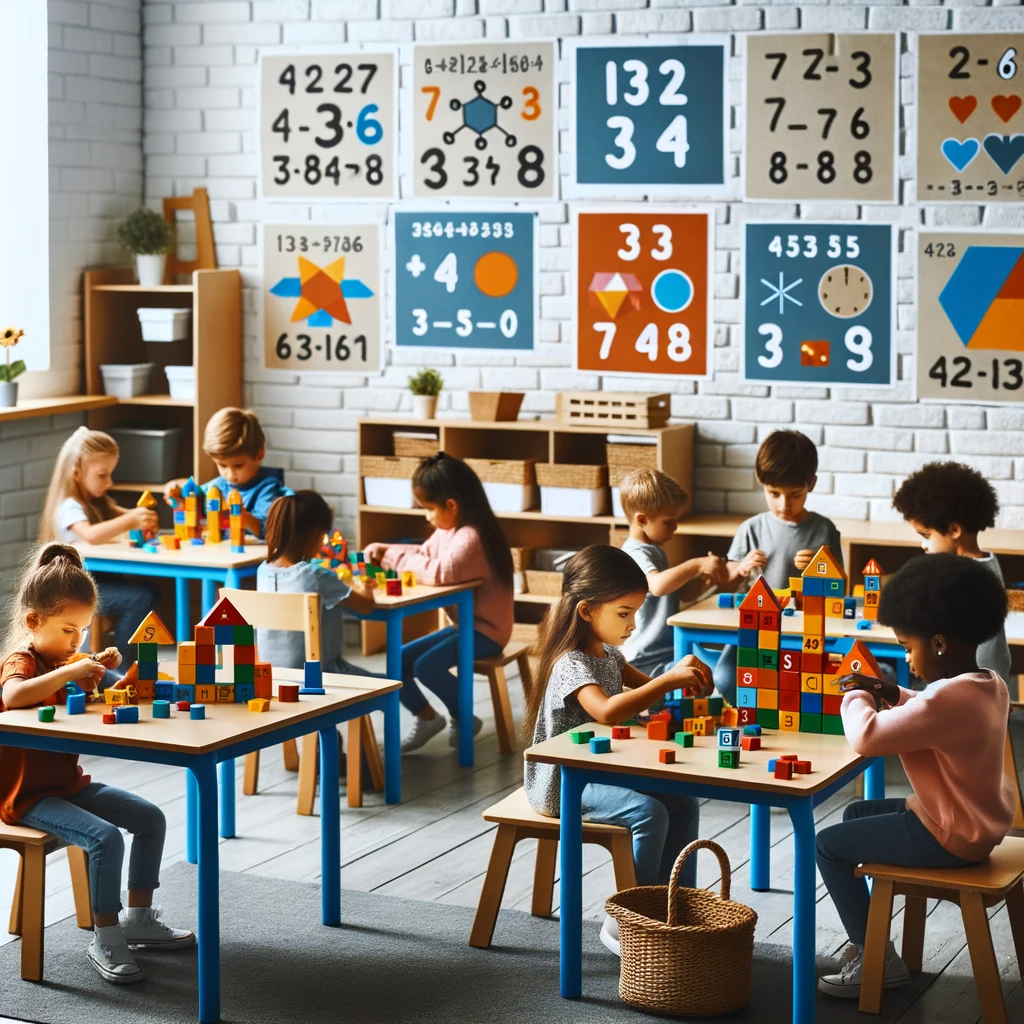
Multiplication and Division: The Power Moves
If addition and subtraction are a walk, then multiplication and division are a sprint! They let you do things faster. Multiplication is like a superpower for adding, and division is sharing equally with no one left out.
Activity: Multiplication Bingo
Make a bingo card with answers to multiplication facts.
Roll two dice to get two numbers.
Multiply them and cover the answer on your card
First to five in a row yells "Bingo!"
Shapes and Sizes: Geometry Around Us
The world is a puzzle of shapes! Circles, squares, triangles—they all fit together to make everything around us. Geometry is the art of shapes and sizes, and it's in everything from soccer balls to snowflakes.
Activity: Shape Hunt
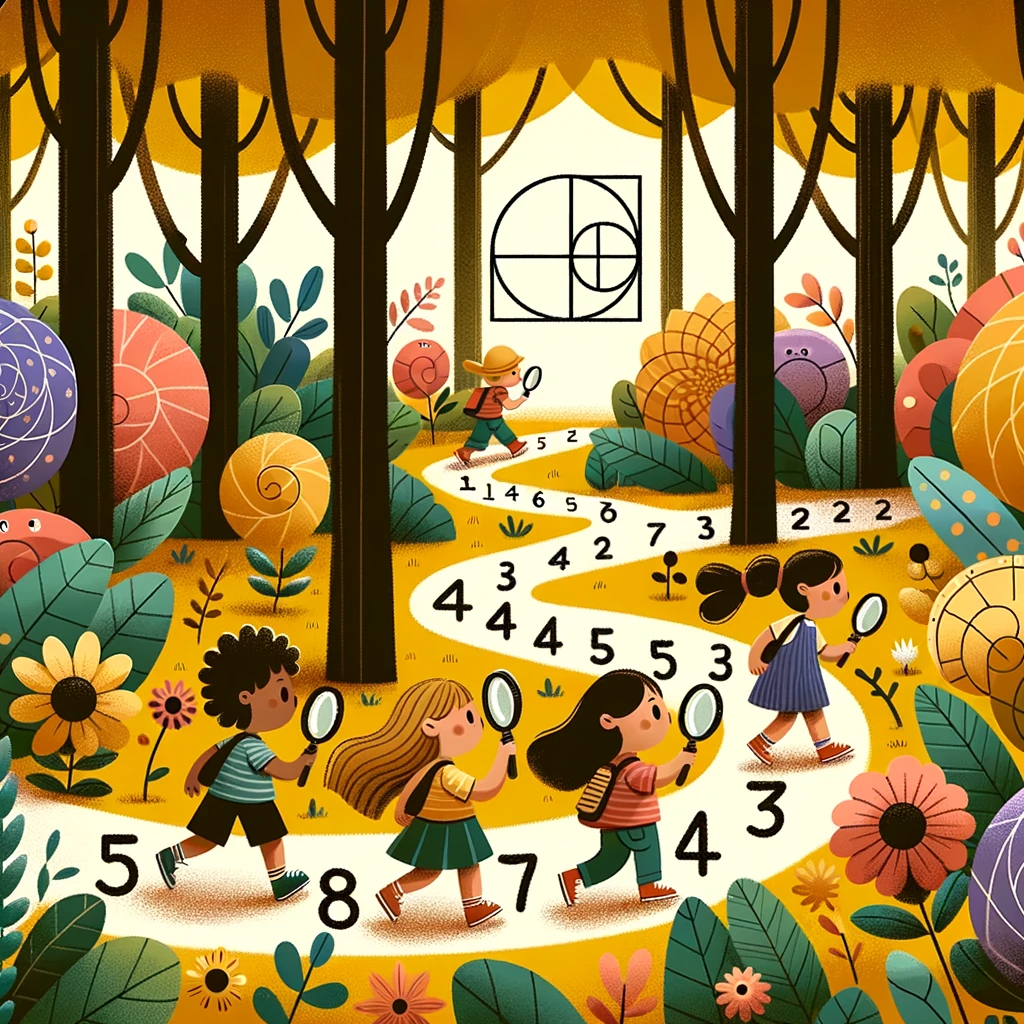
Go on a scavenger hunt for shapes around your house.
Find something round, square, and triangular.
Draw them and see if you can spot any patterns!
The Math of Nature: Fibonacci and Fractals
Did you know that there's math in flower petals and seashells? The Fibonacci sequence and fractals are nature's favorite patterns. They show up in places like pinecones and lightning bolts!
Activity: Fibonacci Art
Create a piece of art using the Fibonacci sequence (1, 1, 2, 3, 5, 8...).
Draw spirals or arrange leaves in this pattern.
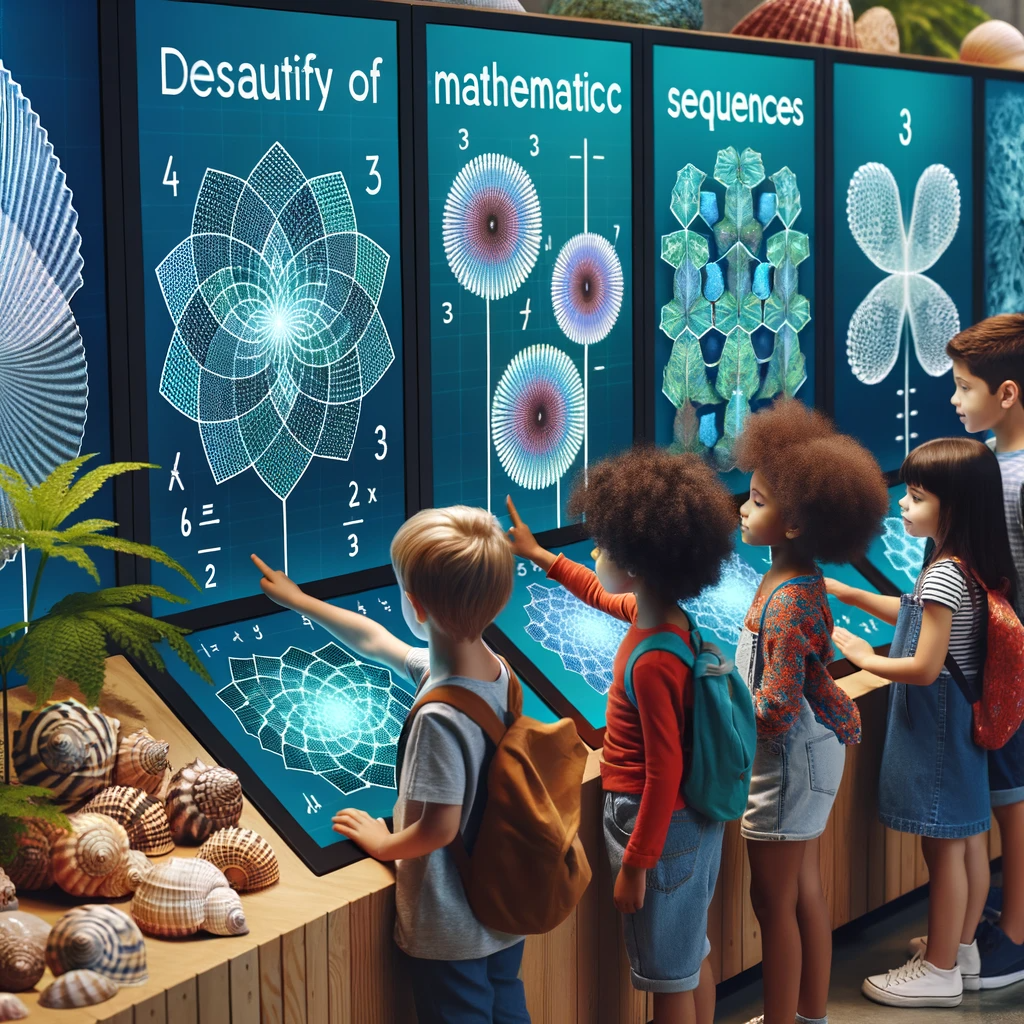
Math Trivia!
A pizza with radius 'z' and thickness 'a' has the volume of Pizz*a.
The number 'googol' is a 1 with a hundred zeroes after it!
Zero is the only number that can't be represented in Roman numerals.
Remember, math isn't just about right answers; it's about asking questions and exploring. With every problem you solve, you're unlocking a piece of the world's puzzle. Math is a playground, and numbers are your friends waiting to play!
Chapter 5: Hands-On STEM: Exciting Experiments & Projects
Introduction to Exploration
Hello, young explorers! Are you ready to roll up your sleeves and dive into some hands-on fun? This chapter is all about doing science, technology, engineering, and math through exciting experiments and projects. Get ready to become a STEM detective!

1. Experiment 1: Volcano Eruption
Become a geologist and create your own volcanic eruption with baking soda and vinegar.
Materials:
A small bottle or a jar
Baking soda
Vinegar
Food coloring (red or orange for lava)
Dish soap (for extra bubbly lava)
Steps:
Place the bottle in a tray to catch your lava.
Fill a quarter of the bottle with baking soda.
Add a squirt of dish soap.
Drop in the food coloring.
Stand back and pour in the vinegar to see your volcano erupt!
What’s Happening?
This bubbly reaction is an acid-base reaction, showing how different chemicals react together to form something new!
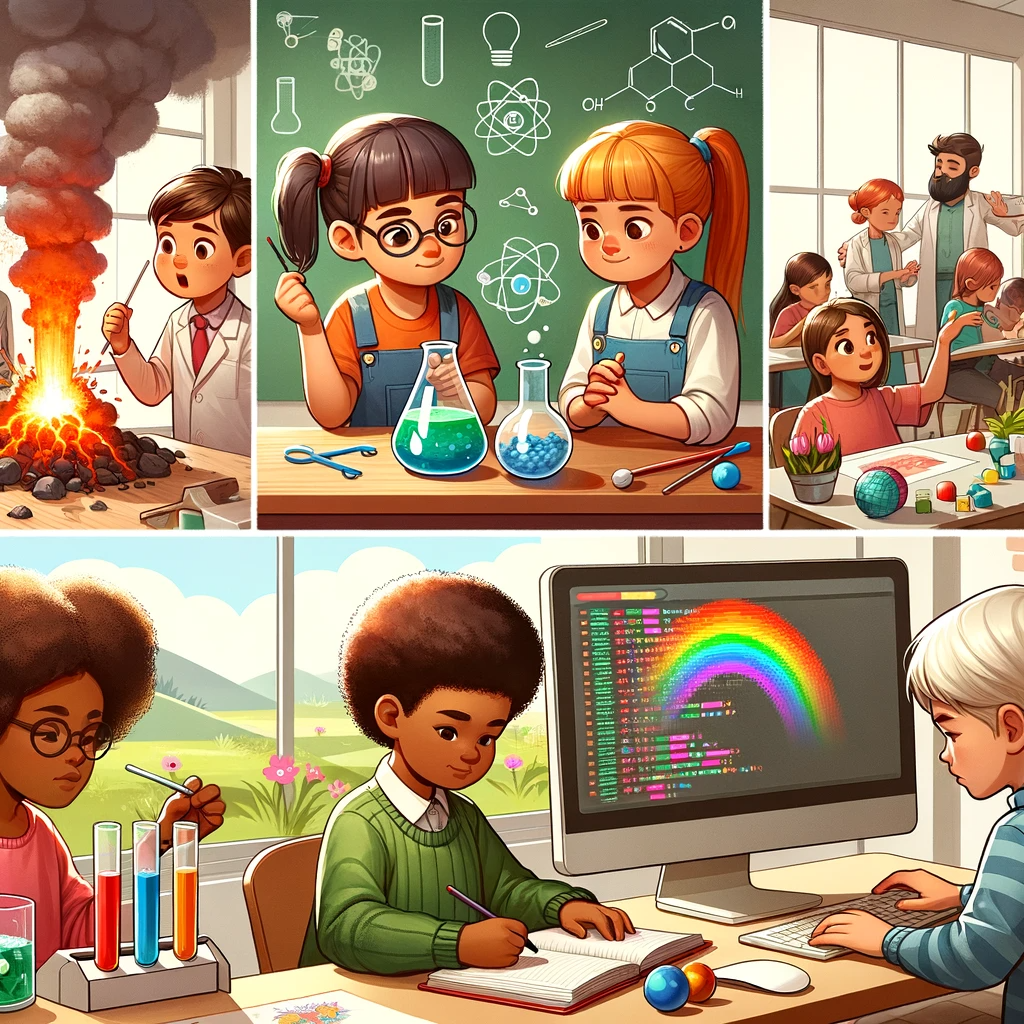
2. Experiment 2: Rainbow in a Glass
Discover how density works by layering liquids of different densities to create a rainbow.
Materials:
Honey
Dish soap
Water
Vegetable oil
Rubbing alcohol
Food coloring
A tall, clear glass
Steps:
Carefully pour each liquid into the glass one at a time.
Start with honey, then dish soap, colored water, vegetable oil, and finally rubbing alcohol.
Add a different food coloring to each liquid (except the honey and oil).
What’s Happening?
Each liquid has a different weight for the same amount (density), so they don't mix, creating a liquid rainbow!
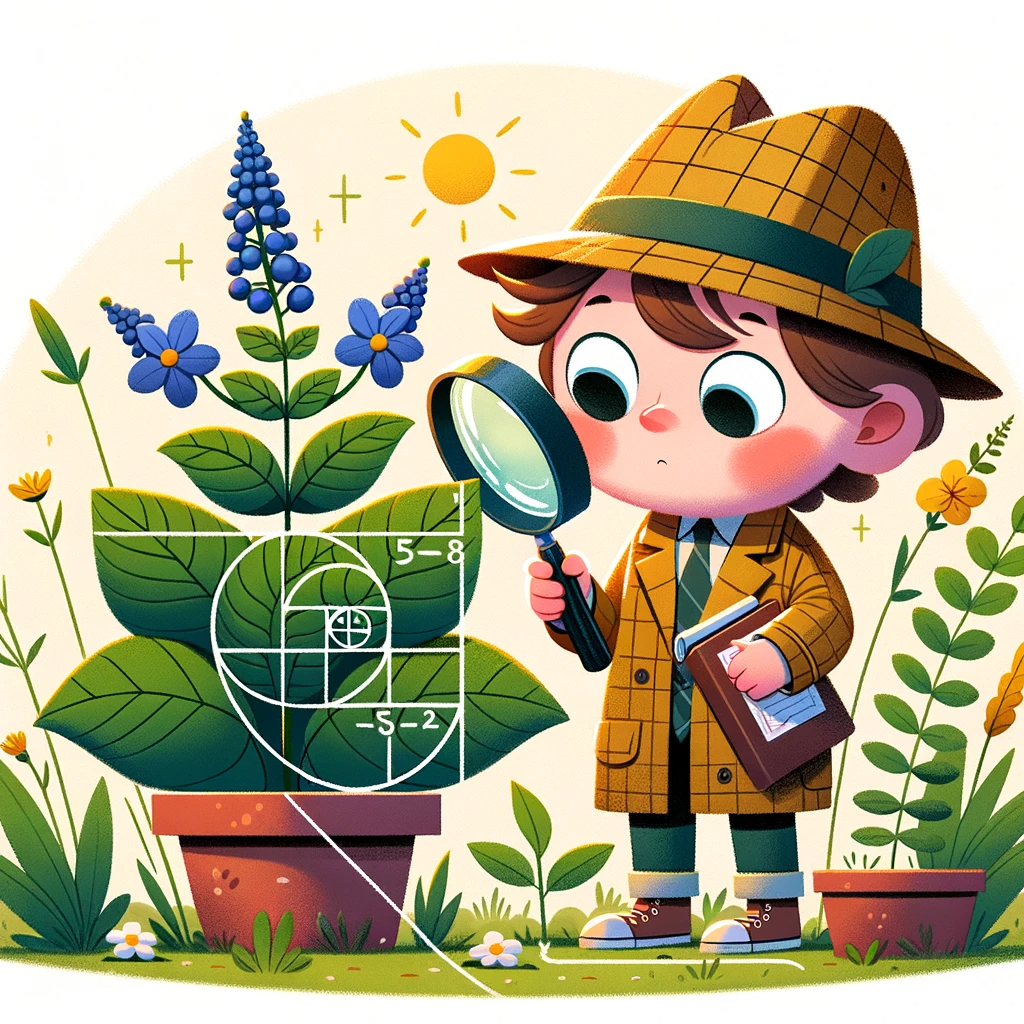
3. Tech Project: Coding a Story
Learn coding by creating a story with a simple block-based coding program like Scratch.
Materials:
Computer or tablet with internet access
Scratch or any similar coding program for kids
Steps:
Choose characters and a setting for your story.
Use the coding blocks to make your characters move and talk.
Add sounds and change scenes to make your story come alive.
What’s Happening?
You’re learning the basics of programming by using commands to tell a story!
4. Engineering Challenge: Paper Bridge
How strong can you make a bridge out of paper? Test your engineering skills!
Materials:
Paper (construction paper or copy paper)
Tape
Coins for weights
Steps:
Fold the paper to make it stronger
Span your bridge between two stacks of books.
Slowly add coins to the middle until it bends or breaks.
What’s Happening?
You're exploring the engineering concepts of strength, load-bearing, and structural integrity!
5. Math Puzzle: Treasure Hunt
Use math to find hidden treasure! Create a map with coordinates and clues.
Materials:
Paper for a map
Pen or markers
Small "treasure" to hide
Steps:
Draw a grid map with X and Y coordinates.
Hide your treasure and mark the spot on your map.
Write clues using coordinates to find the treasure.
What’s Happening?
You’re using math skills like mapping and coordinates to locate something specific!
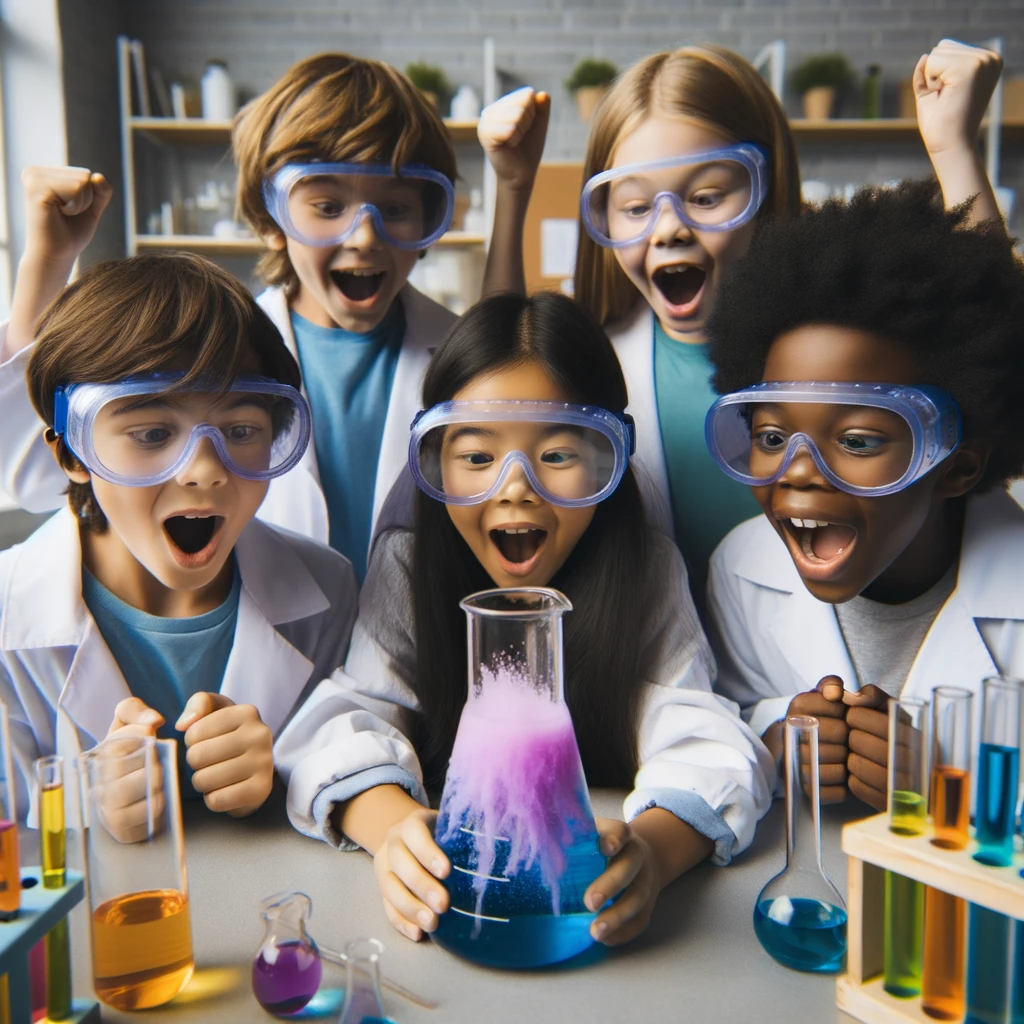
Science Fun Fact!
Did you know that every time you play with slime, you're learning about polymers? Slime is a type of polymer that can stretch and squish because of the way its molecules are linked togethe
Every experiment and project you do is a step into the amazing world of STEM. Whether you’re creating chemical reactions, learning about physics, coding a story, building a structure, or solving math puzzles, you're discovering the joy of learning by doing. Remember, there's no limit to what you can discover with your hands, your mind, and a bit of curiosity!
Chapter 6: STEM Heroes: Stories of Amazing Innovators
Once upon a time, in the land of knowledge and curiosity, there lived heroes of a different kind. They didn't wear capes or fly through the skies, but they had superpowers that changed the world. These were the STEM heroes, brilliant minds whose passion for Science, Technology, Engineering, and Math created amazing things.
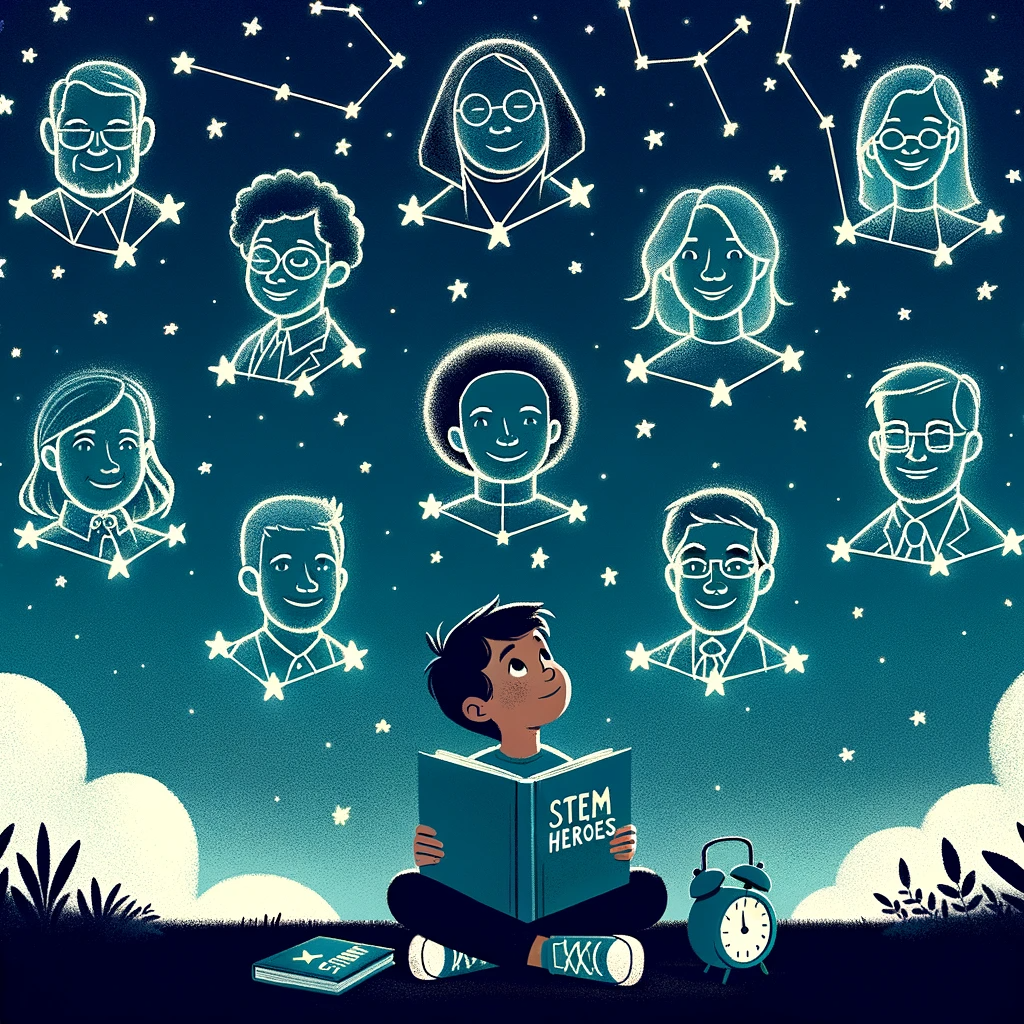
In this chapter, we'll explore stories of some incredible innovators, past and present, whose dreams and works have sparked the flames of progress.
First, meet Ada Lovelace, a mathematician who lived long ago when computers were just a fantasy. With her sharp mind and visionary thinking, she wrote the world's first computer program, without even having a real computer! She saw a future where machines could create art and music, and her ideas paved the way for all the smart gadgets we use today
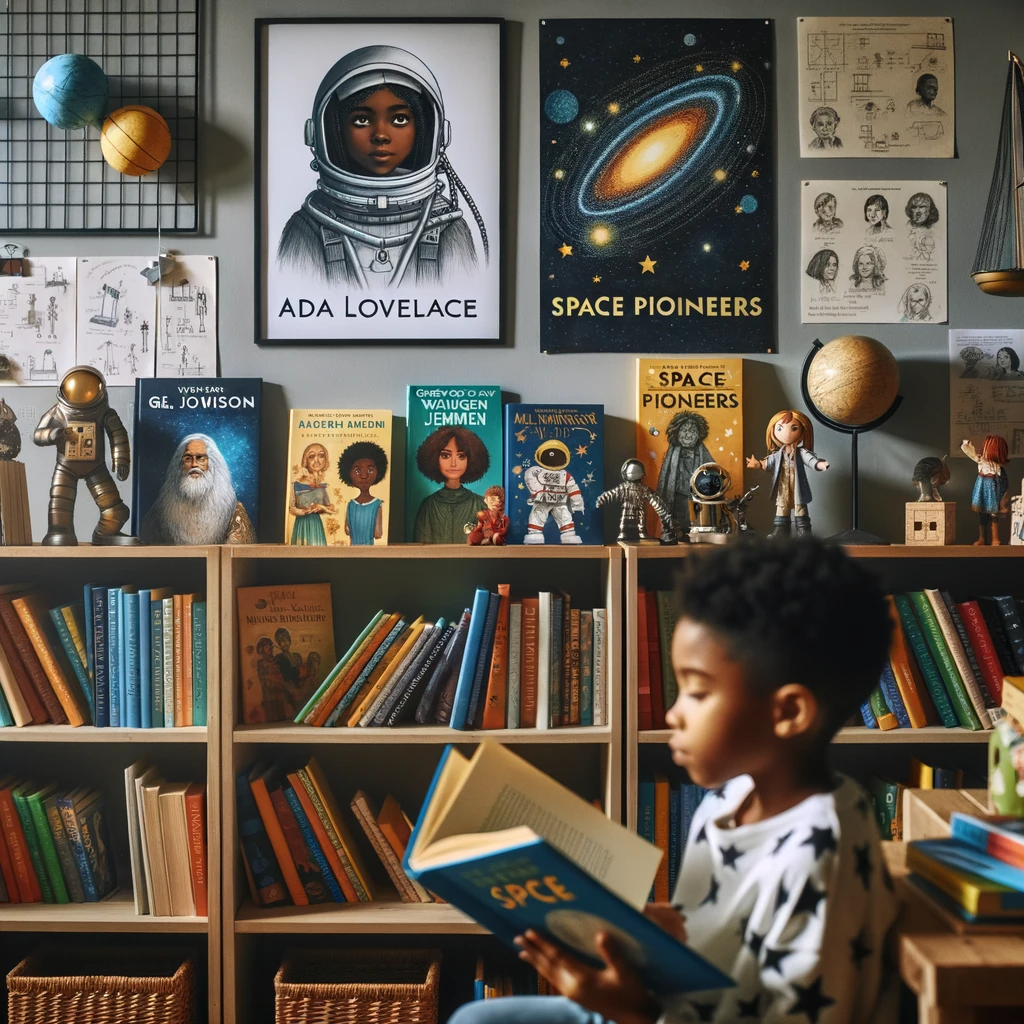
Then there's George Washington Carver, who found his superpower in plants. He could talk to the flowers, the trees, and, most importantly, the peanuts! He transformed agriculture, teaching farmers how to nourish their soil and crops, and invented hundreds of products from peanuts, helping to make the world a healthier place.
Fast forward to modern times, we have heroes like Mae Jemison, the first African American woman to travel into space. She showed that the sky's not the limit, inspiring kids everywhere to reach for the stars and beyond.
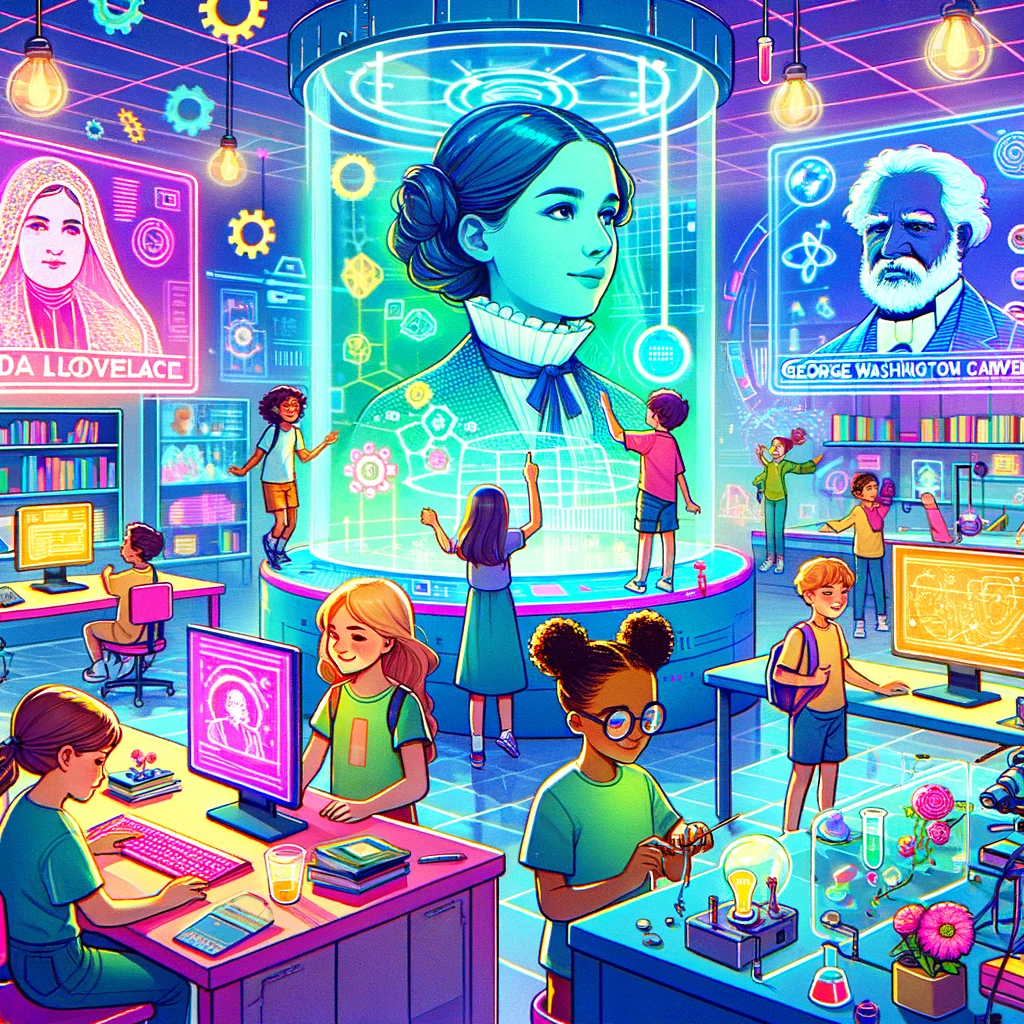
And let's not forget the tech wizards of today, like Tim Berners-Lee, who spun the World Wide Web, connecting people across the globe in ways we could never imagine. Because of him, we can make friends in places we've never been, learn anything we want, and share our stories with the world.
Each of these heroes started as curious kids, just like you, who asked questions, played with ideas, and never gave up, no matter how tough the challenges. They remind us that with courage, imagination, and a STEM toolkit, we all can be heroes in our own epic tales.
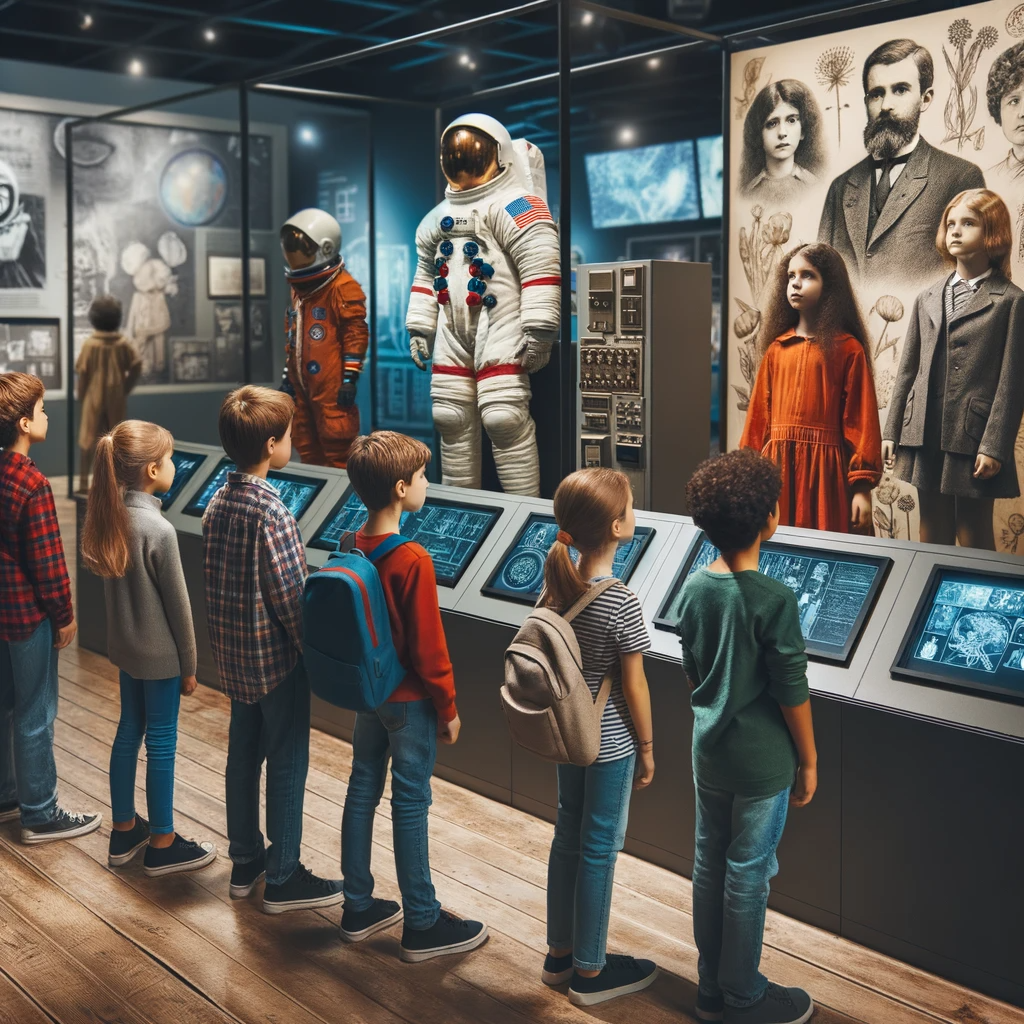
So, what will your story be? How will you use your superpowers to leave your mark on the world? Dream big, little innovators, for you are the STEM heroes of tomorrow.
And as we close this chapter, remember that every hero's journey begins with a single step—or in your case, a single question. What will you discover next?
Chapter 7: Your STEM Future: Building Tomorrow
Welcome to the future, young explorers! It's a place of flying cars, robots, cities in the sky, and maybe even colonies on Mars. But guess what? The future isn't just a dream. It's something we can build, and it starts with you and STEM!
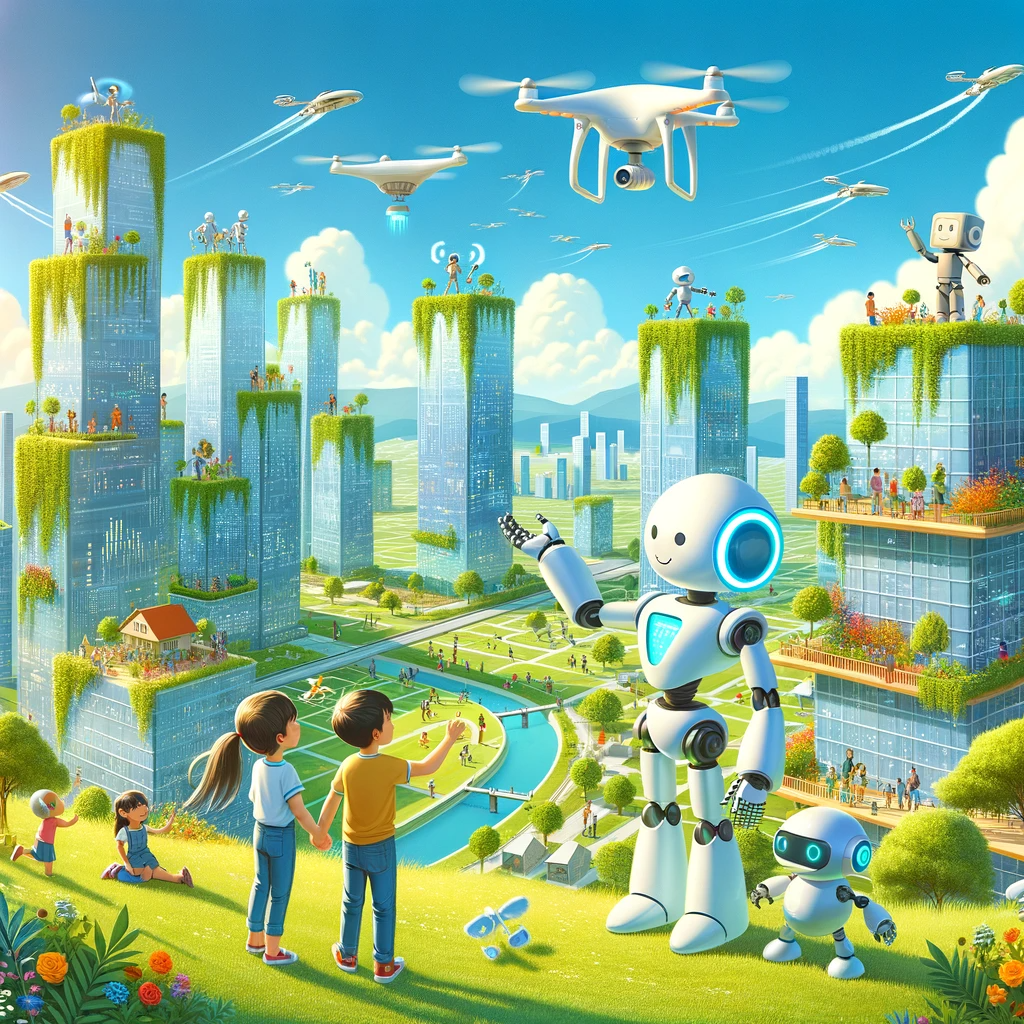
In this chapter, we're going to imagine all the incredible things you might do and see in your STEM future.
Picture this: You wake up to the gentle voice of your AI assistant, who has planned the perfect day for you. It knows you so well because it learns and grows, just like a real friend. You step outside, and a self-driving car whisks you to school. But this is no ordinary school—it's a place where you learn by doing. You might code a game, design a drone, or solve a mystery with forensic science.
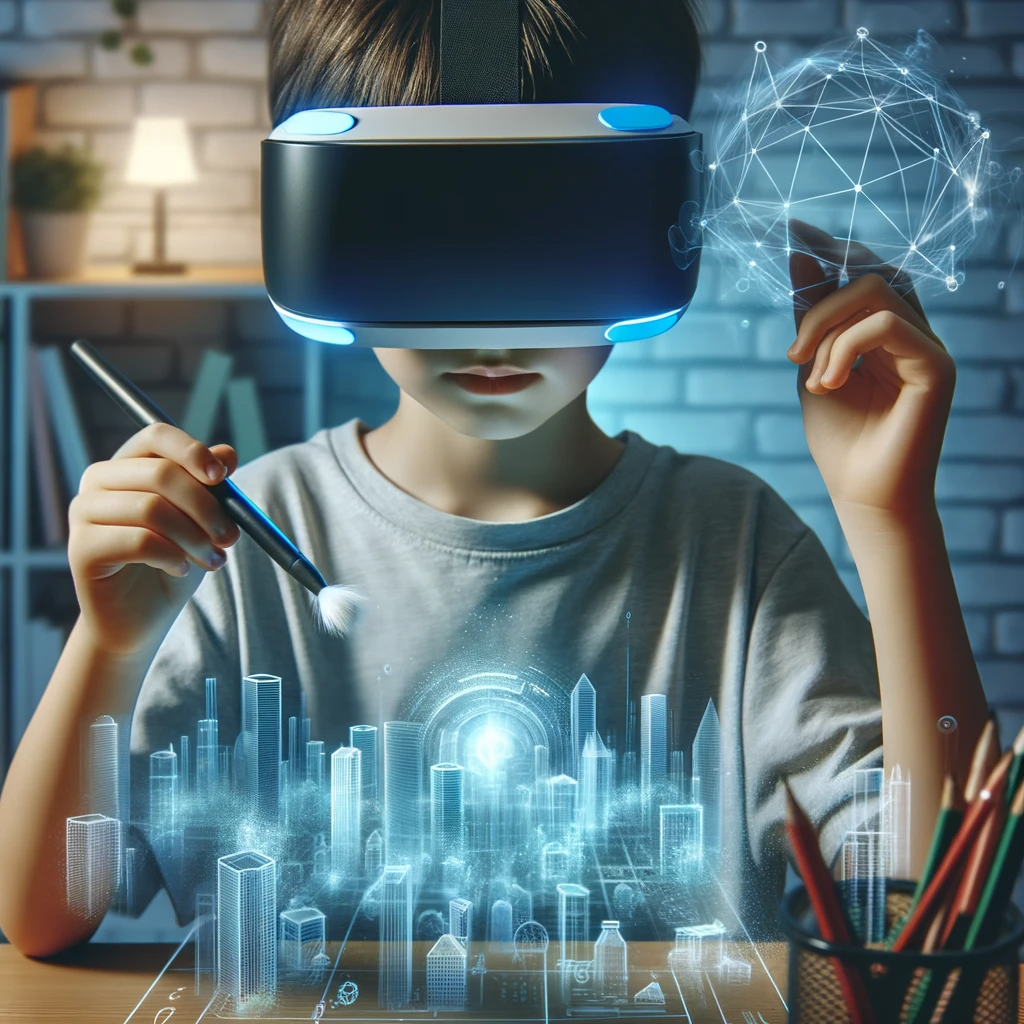
And when you're ready to work? You could be an engineer designing smarter homes that save energy and protect the planet. Or perhaps you'll be a scientist finding cures for diseases using computers that can think like humans. You might even be the astronaut who takes that first step onto Mars, sending back selfies to Earth!
Let's not forget the tech inventors among you, who might create the next big thing in the world of gadgets. Or the mathematicians who will discover new kinds of numbers and solve puzzles that we don't even know are puzzles yet.
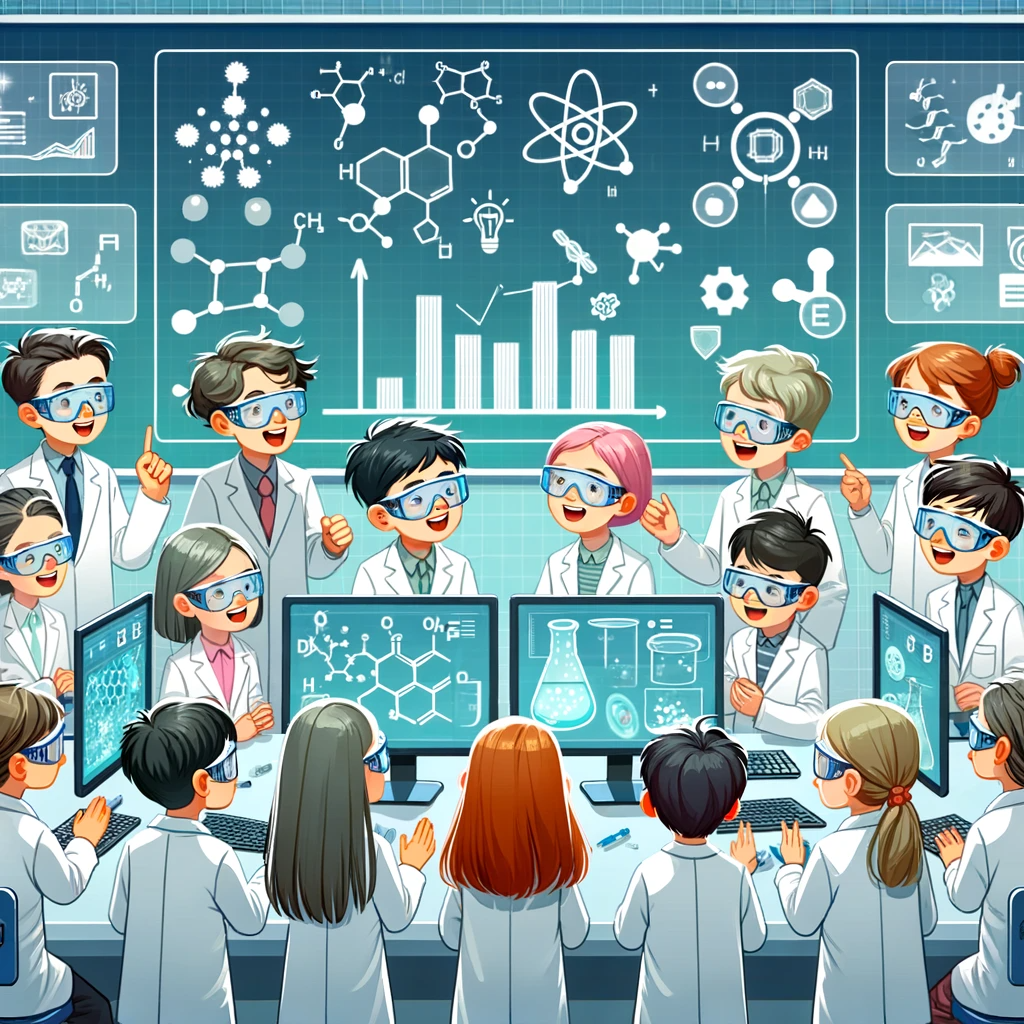
But it's not just about the cool jobs you might have. It's about the problems you'll solve and the ways you'll help people. With STEM, you can build houses that withstand storms, make water clean and safe for everyone, and even find new ways to grow food so no one goes hungry.
The future is a canvas, and STEM gives you the colors to paint it with. It's a puzzle, and you're the ones who will put all the pieces together. It's a story, and you're the heroes who will write the next chapters.
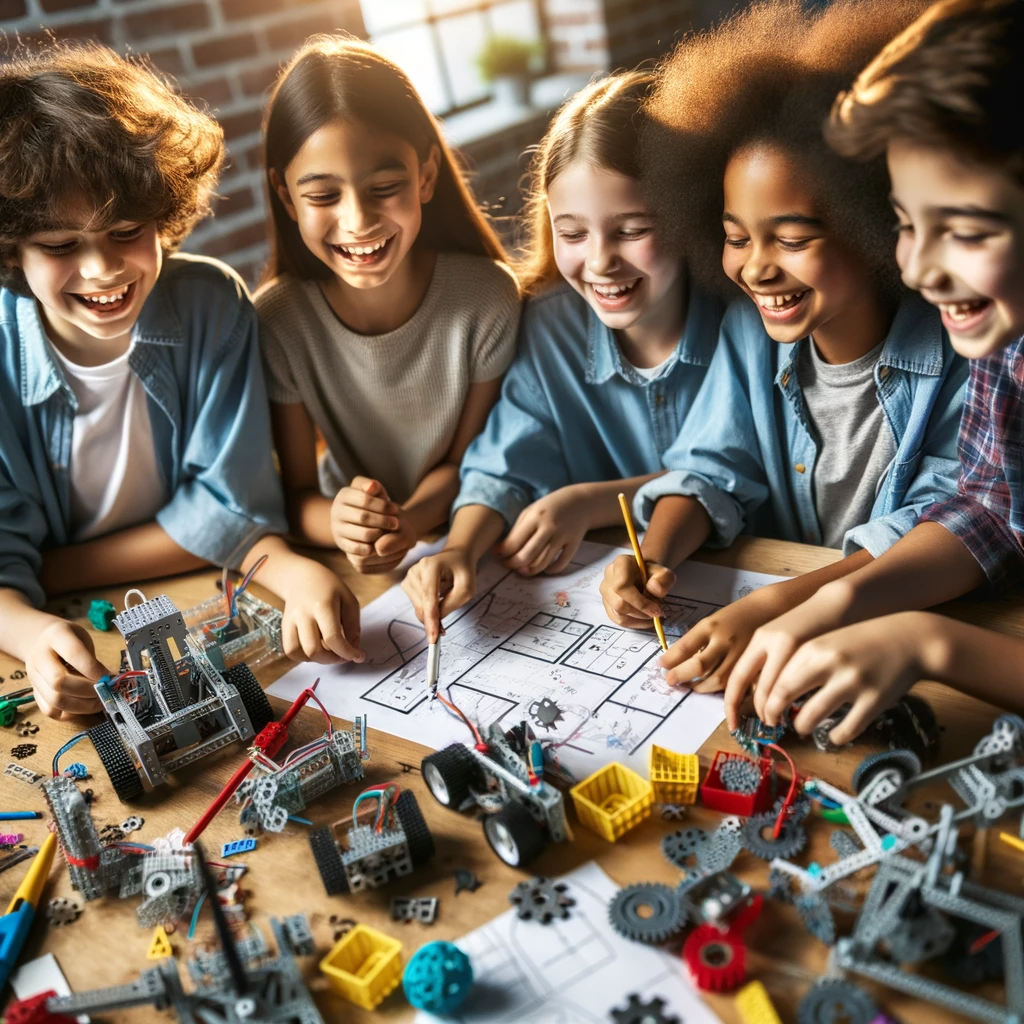
So, dream up the future you want to live in, then grab your STEM toolkit and start making it happen. Because the world of tomorrow needs the curiosity and courage of kids like you today.
And who knows? One day, a kid might be reading about you in their own chapter of STEM heroes, inspired by the amazing things you've done. Now, isn't that a future worth building?
Glossary: STEM Words to Know
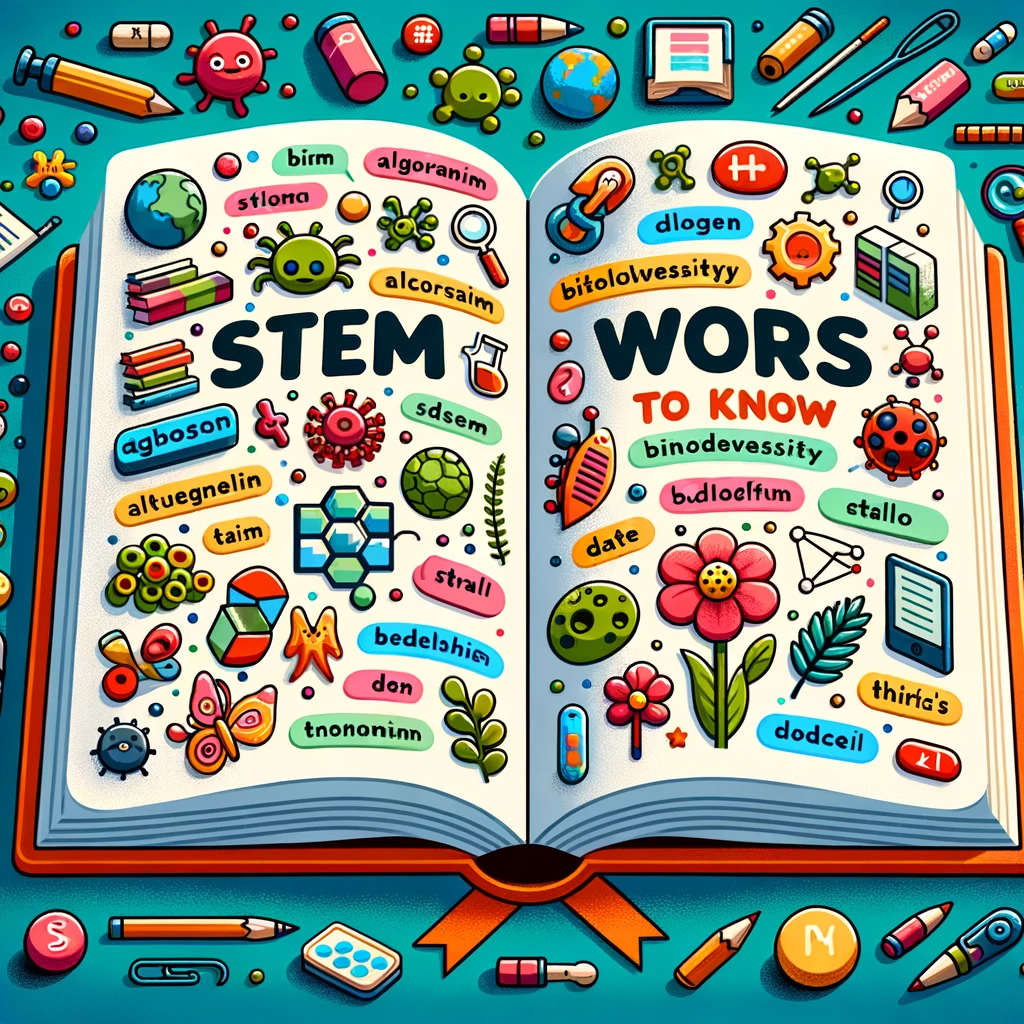
Algorithm - A set of rules or steps to solve a problem or complete a task, like a recipe for a computer.
Astronomy - The science of everything in outer space, studying stars, planets, and galaxies.
Biodiversity - All the different kinds of living things in a particular area, from tiny bugs to tall trees.
Cells - The smallest units of life that make up all living things, like building blocks for plants and animals.
Data - Information collected for analysis or calculation, like the scores from your favorite video game.
Ecosystem - A community of living things and their environment, working together like a big, natural family.
Friction - The force that happens when two things rub against each other, like when you slide down a slide.
Gravity - The force that pulls everything towards the center of the Earth, keeping our feet on the ground.
Hypothesis - A smart guess about what you think will happen in a science experiment.
Innovation - A new idea or way of doing something that makes life better or easier.
Joule - A unit to measure energy, like how much power it takes to lift a toy off the ground.
Kinetic Energy - The energy that something has because it's moving, like a rolling soccer ball.
Laboratory - A special room or building where scientists conduct experiments and make discoveries.
Molecule - A group of atoms bonded together, forming the smallest unit of a chemical compound that can take part in a chemical reaction.
Newton - A unit to measure force, named after Sir Isaac Newton, who discovered gravity.
Organism - Any individual living thing, from a single-cell bacteria to a blue whale in the ocean.
Photosynthesis - How plants use sunlight to make food from water and carbon dioxide, which is pretty neat!
Quartz - A hard, crystalline mineral composed of silicon and oxygen atoms, often used in watches and electronics.
Renewable Energy - Power that comes from sources that don't run out, like wind, water, and sunlight.
Species - A group of similar living things that can breed and have babies together, like all the different types of dogs.
Technology - The use of scientific knowledge to create tools and machines that make life easier, like computers and smartphones.
Universe - Everything that exists, including all space, time, matter, and energy.
Velocity - The speed of something in a certain direction, like how fast a bird flies south for the winter.
Watt - A unit to measure electrical power, like how bright a lightbulb is.
X-axis - The horizontal line on a graph that often represents time.
Yield - The amount of something produced, like the number of apples harvested from a tree.
Zoology - The study of animals and how they live, from tiny insects to giant elephants.
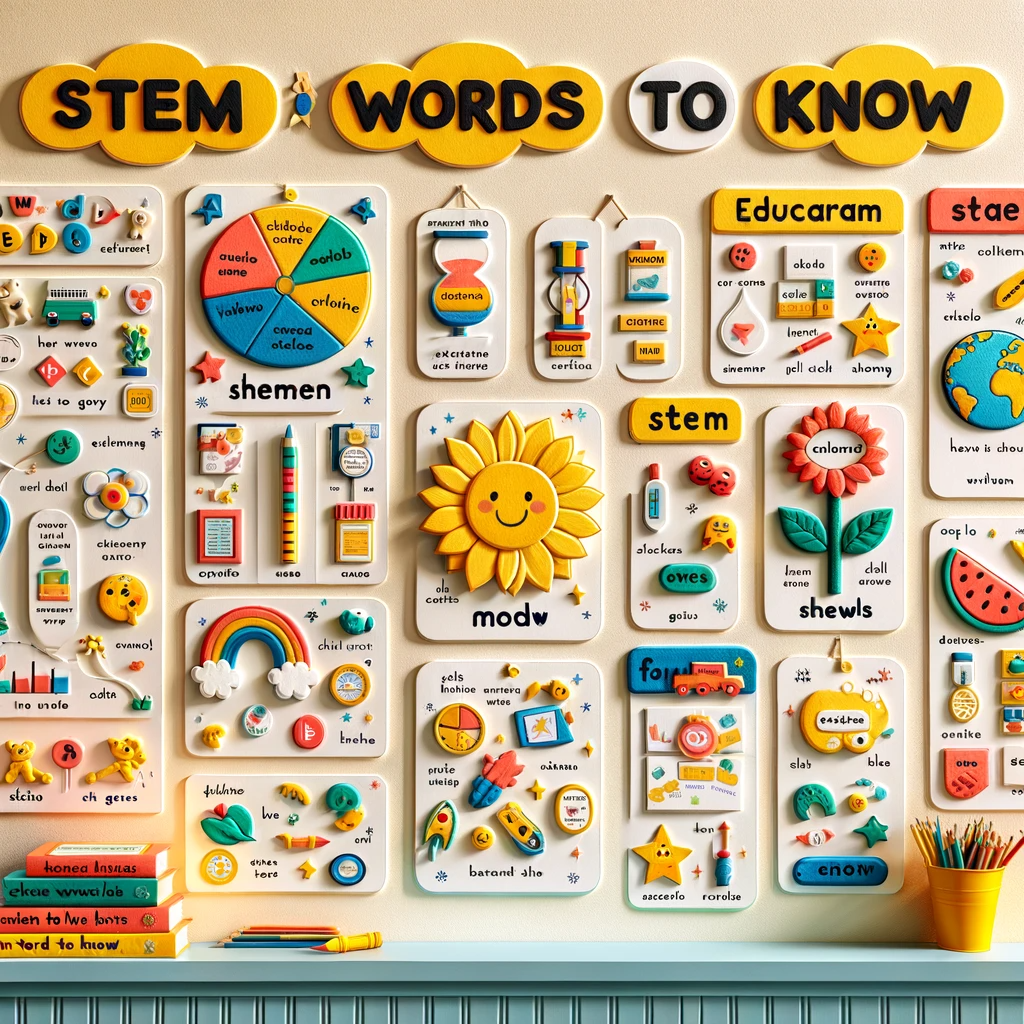
Resources: Places to Learn More
Websites:
NASA Kids' Club: Explore space and science with fun games and facts straight from NASA! kidsclub.nasa.gov
Code.org: Dive into the world of coding with interactive lessons and activities. code.org
National Geographic Kids: Discover the wonders of nature and cultures around the world. kids.nationalgeographic.com
Science Kids: Enjoy experiments, cool facts, and games all about the world of science. sciencekids.co.nz
Khan Academy: A free resource for learning all sorts of subjects, including many STEM topics. khanacademy.org

Museums and Science Centers:
The Smithsonian Institution: Offering a wide range of online resources and virtual tours. si.edu
The Exploratorium: A museum in San Francisco with many online science resources. exploratorium.edu
The Museum of Science and Industry, Chicago: Learn about their online science activities. msichicago.org
YouTube Channels:
CrashCourse Kids: Fun and educational science videos for a younger audience. Search for "CrashCourse Kids" on YouTube.
SciShow Kids: Explore the world of science with exciting and engaging videos. Search for "SciShow Kids" on YouTube.
TED-Ed: Educational videos on a variety of topics, including many STEM subjects. Search for "TED-Ed" on YouTube.
Apps and Games:
Tynker: Coding games and lessons to teach kids how to create their own apps and games. tynker.com
DragonBox: Fun math games that cover topics from addition to algebra. dragonbox.com
Solar Walk: An interactive 3D model of the solar system to explore space. Available on iOS and Android app stores.
These resources are great starting points to expand your knowledge and have fun with STEM. Remember, the world of STEM is vast and exciting, so keep exploring and learning!
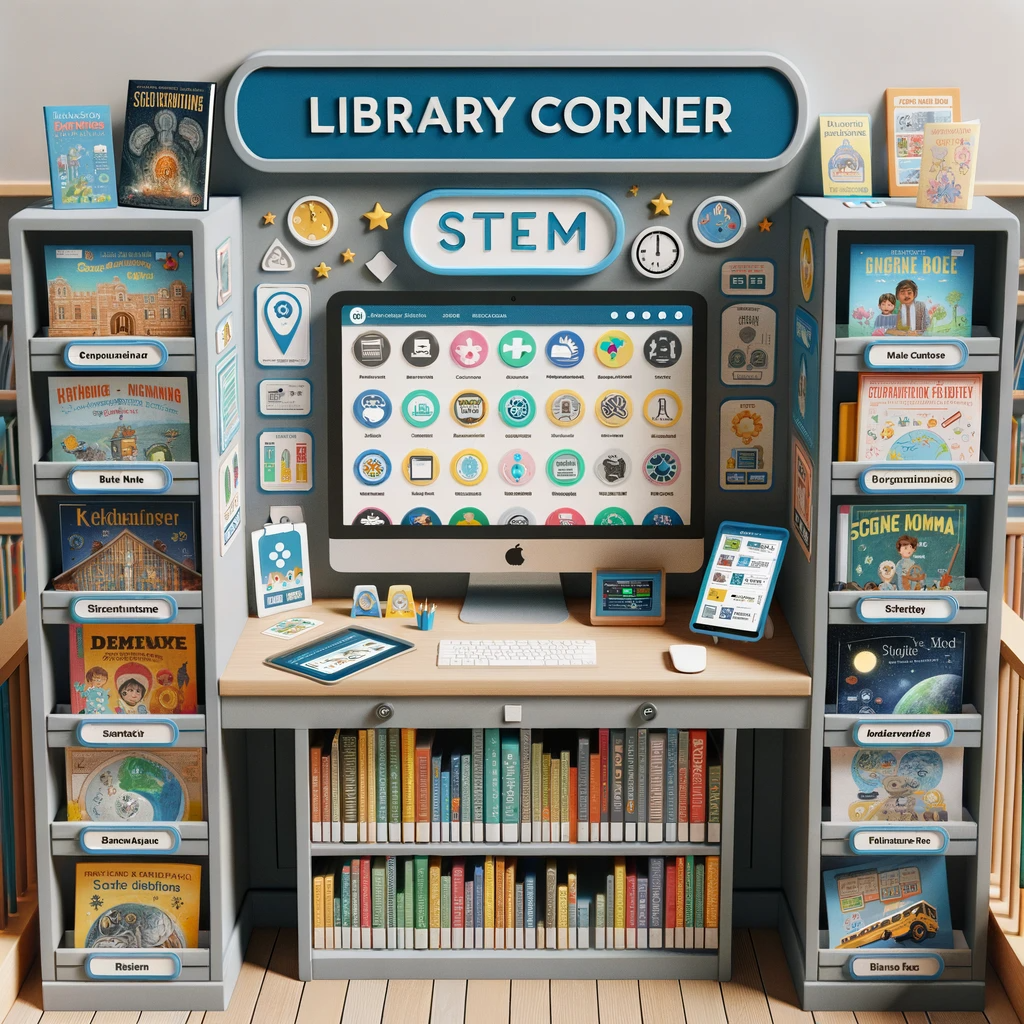
By Tommy Hong
About ME:

Venmo